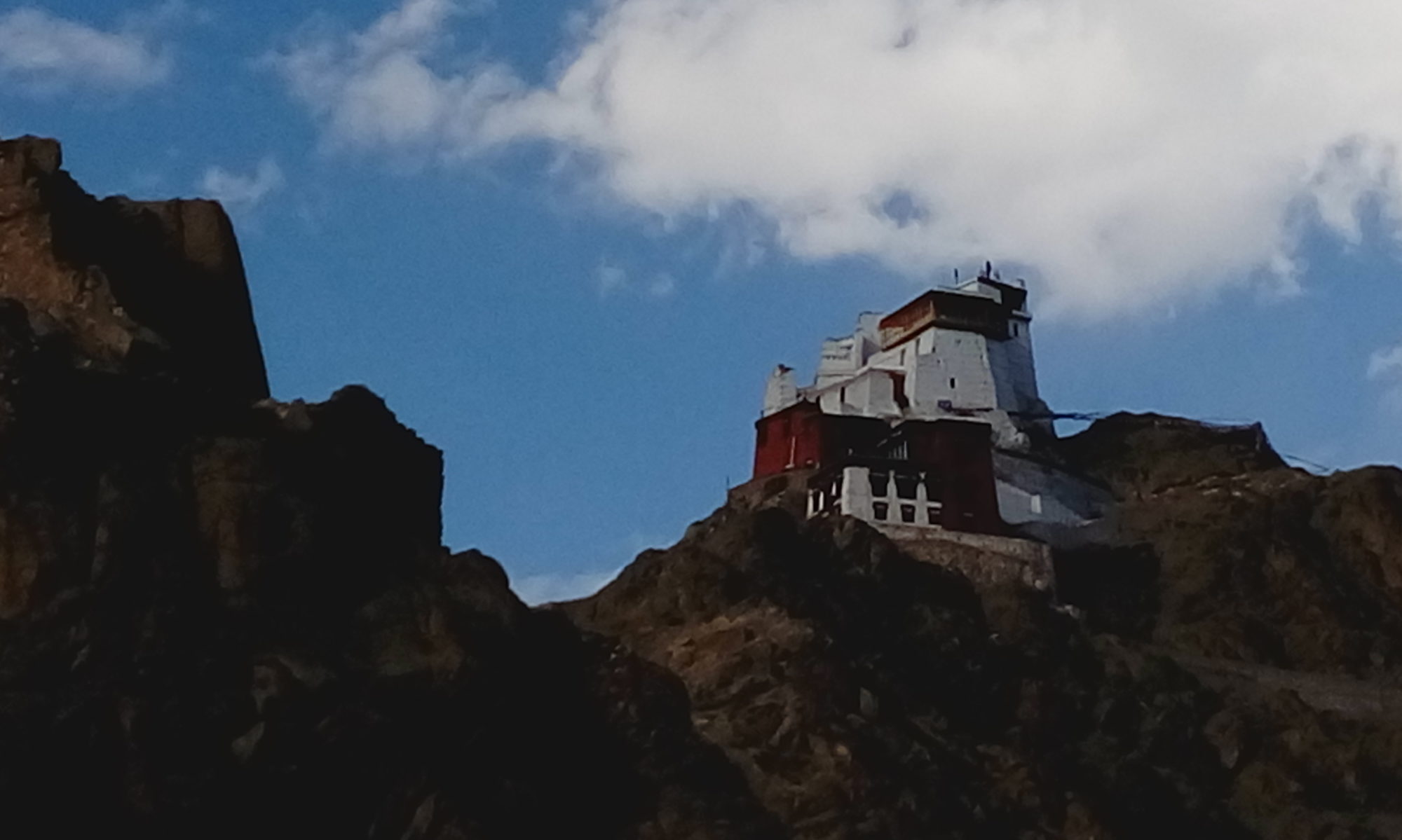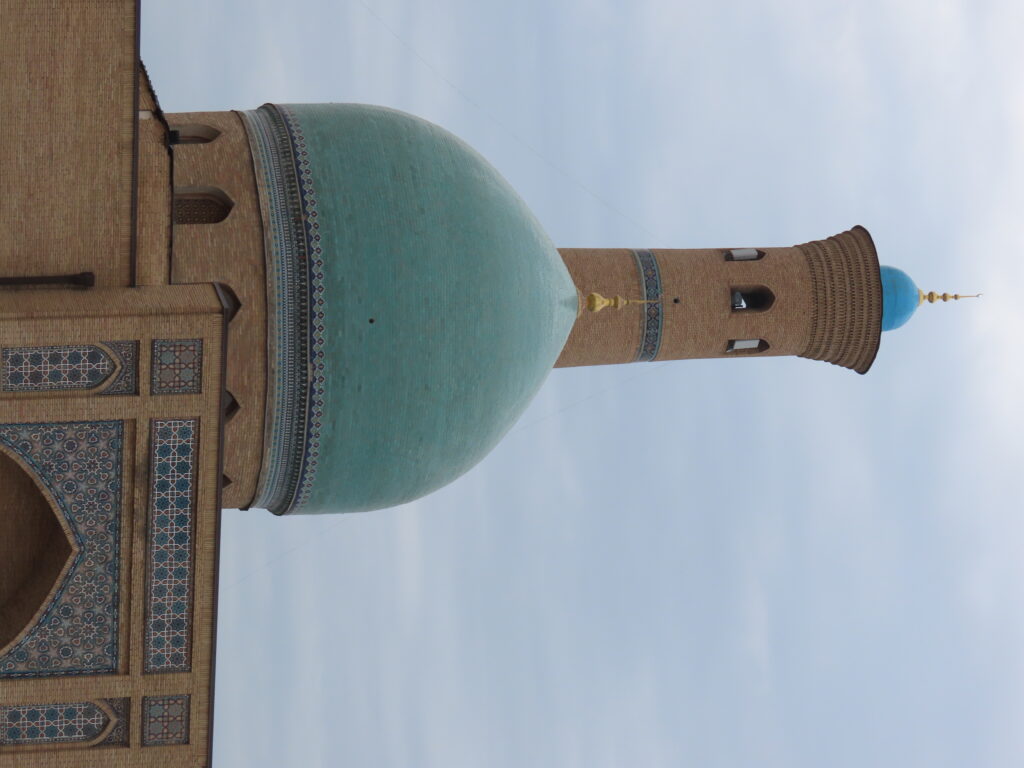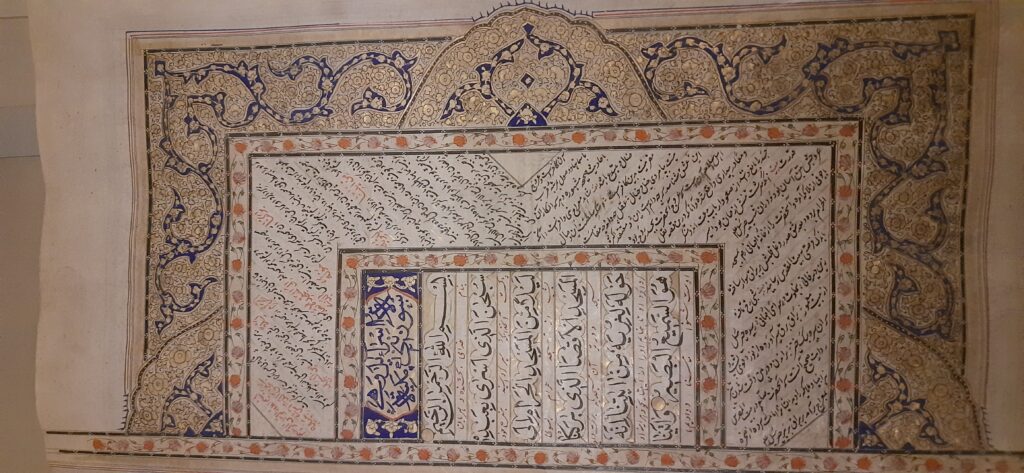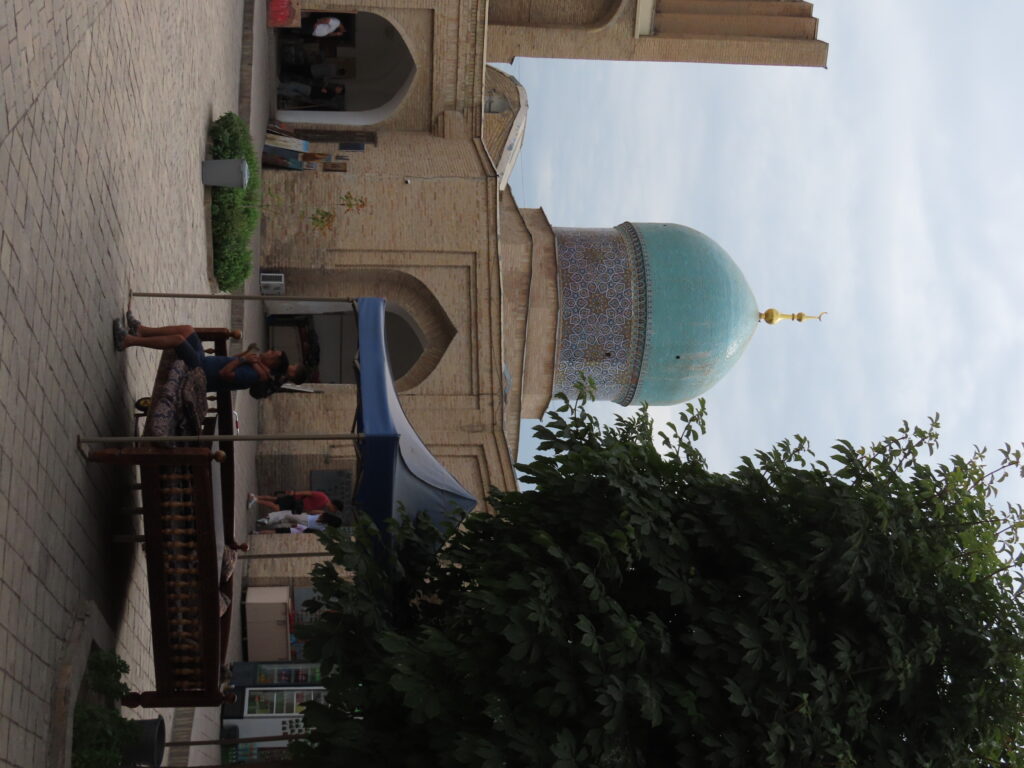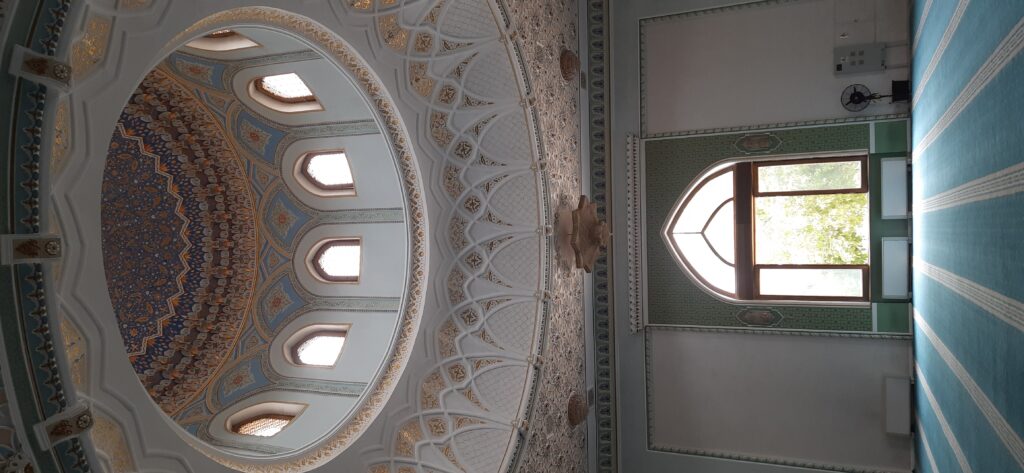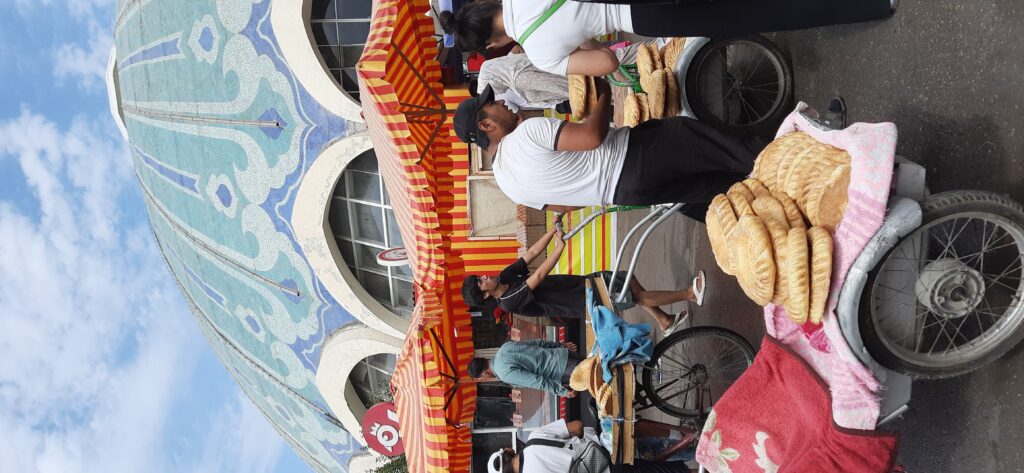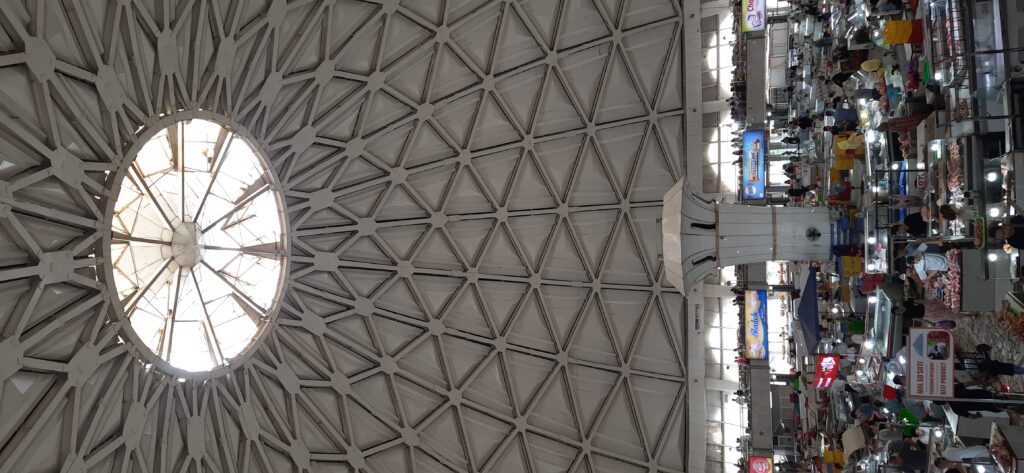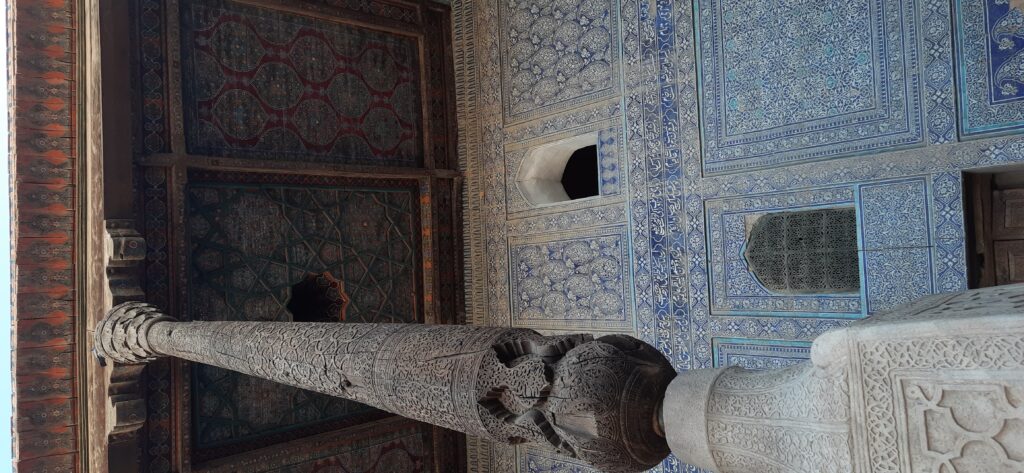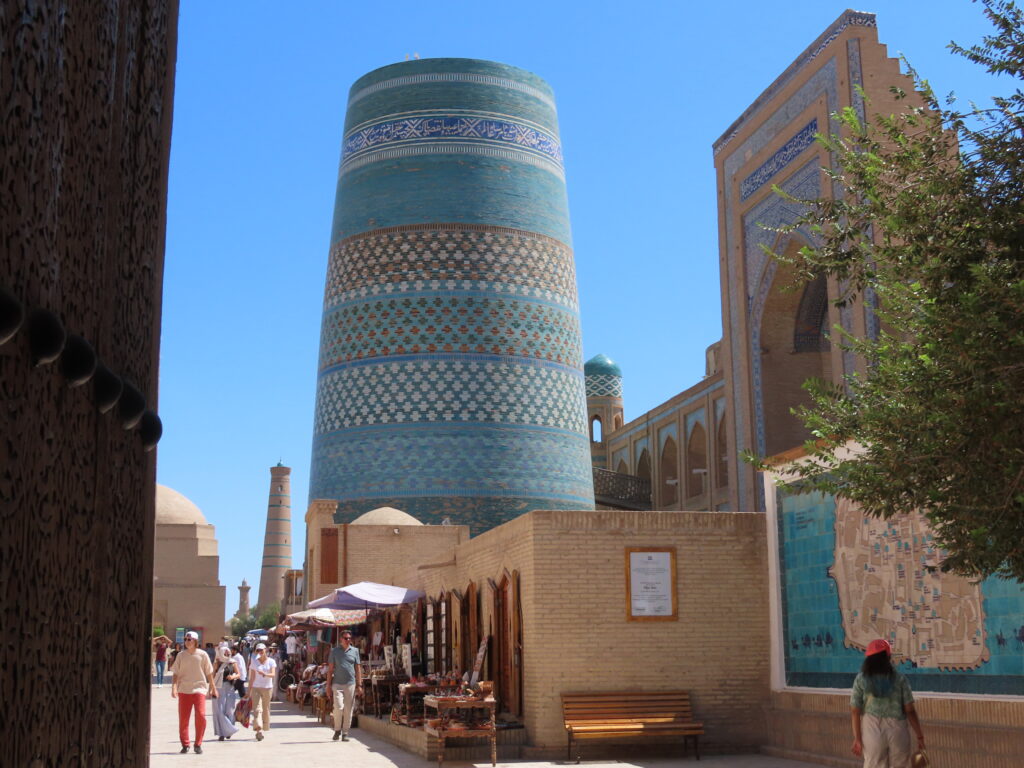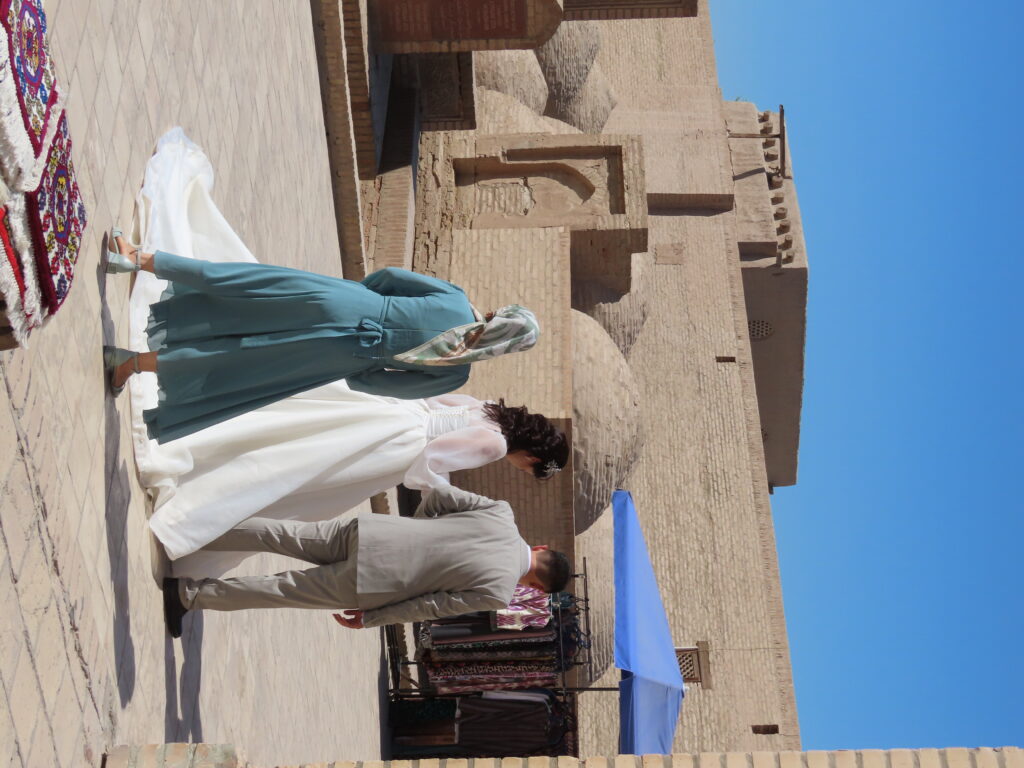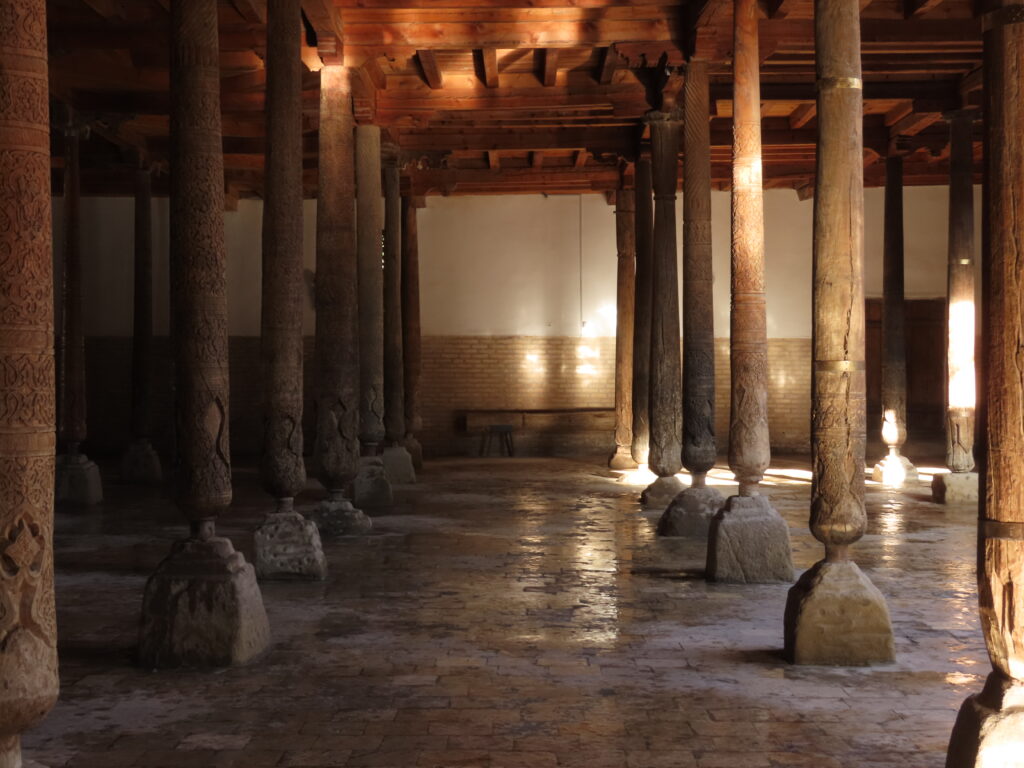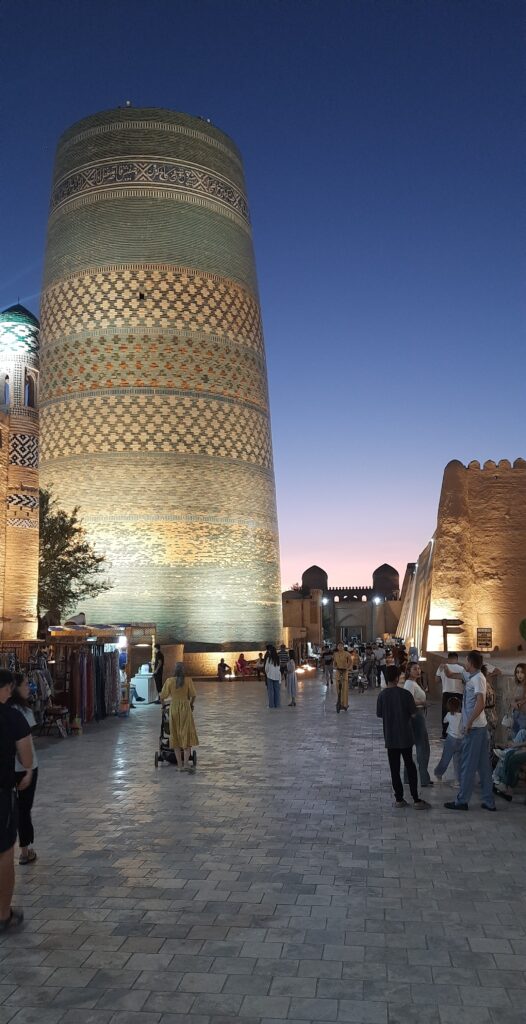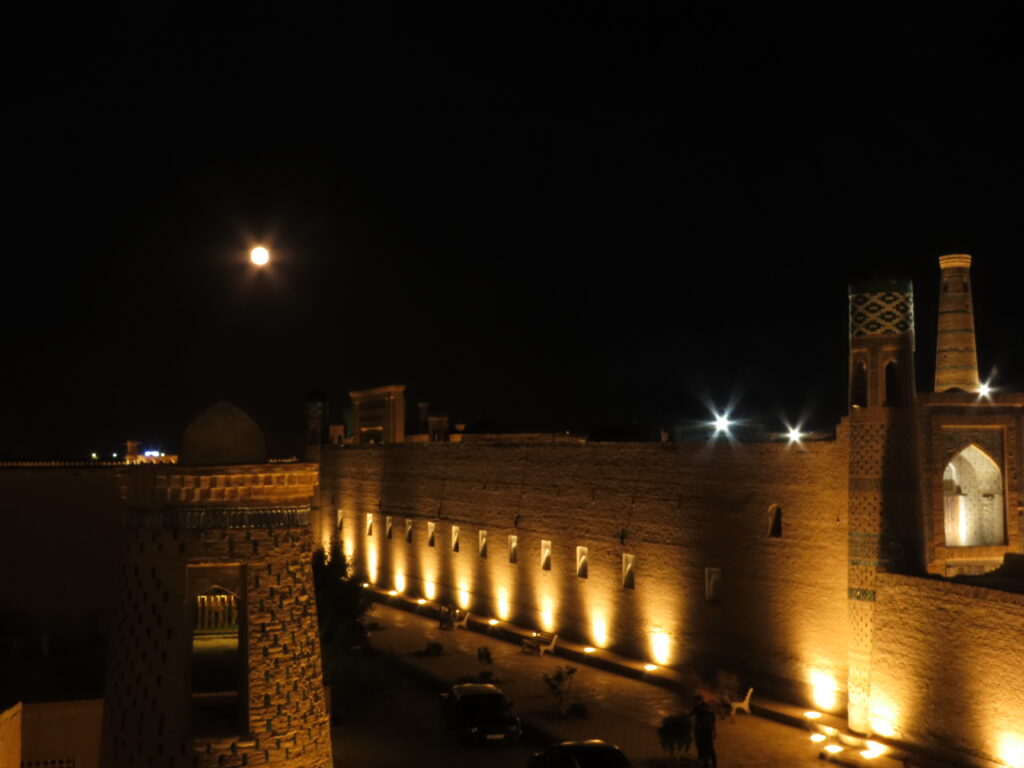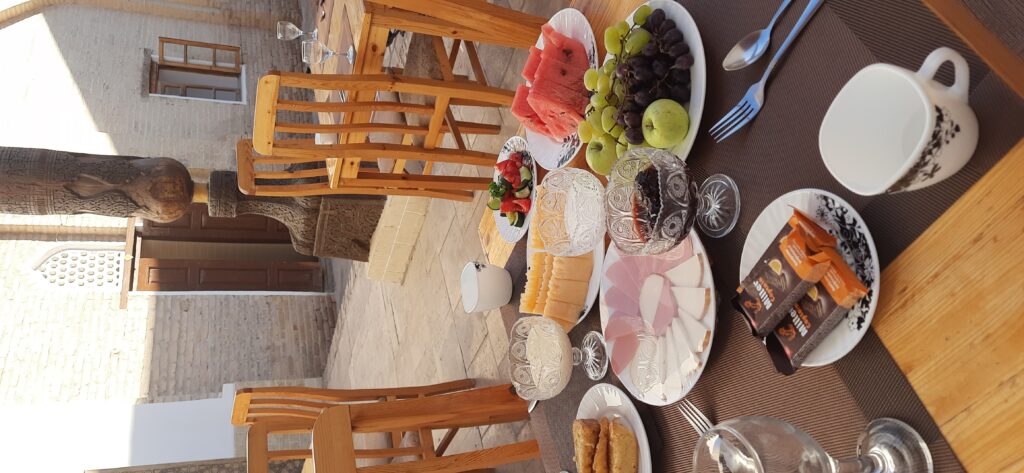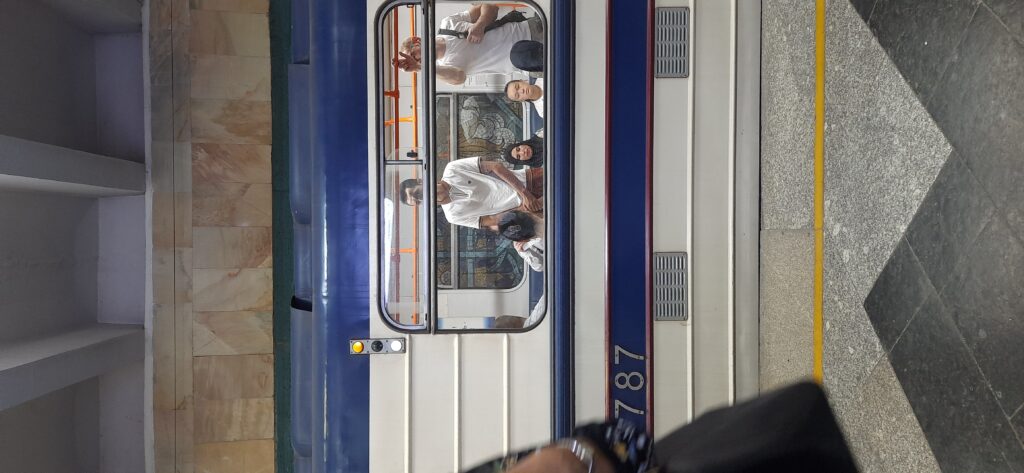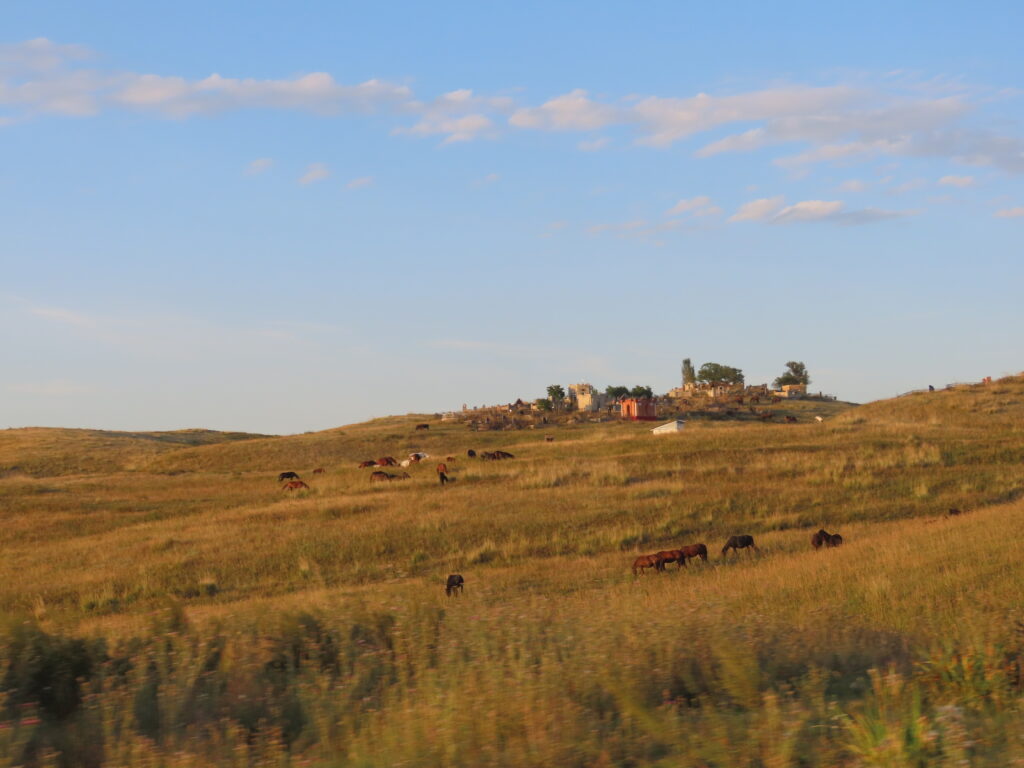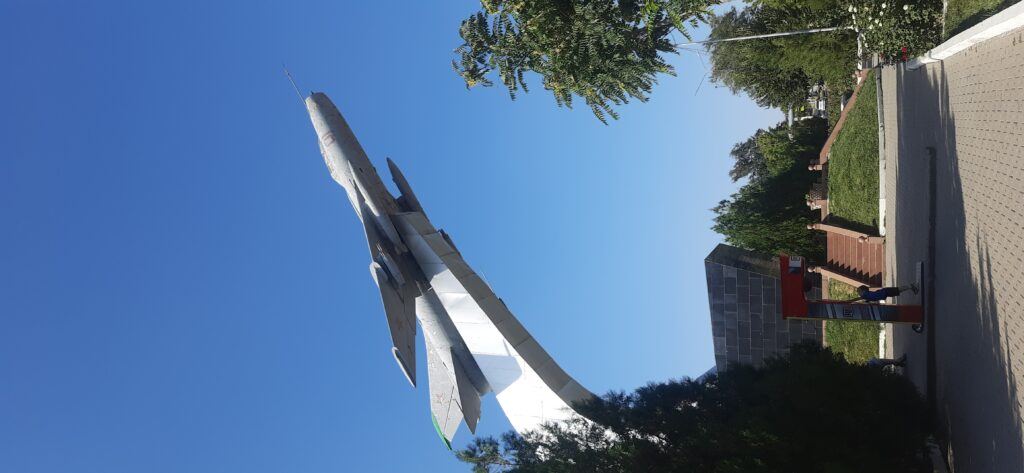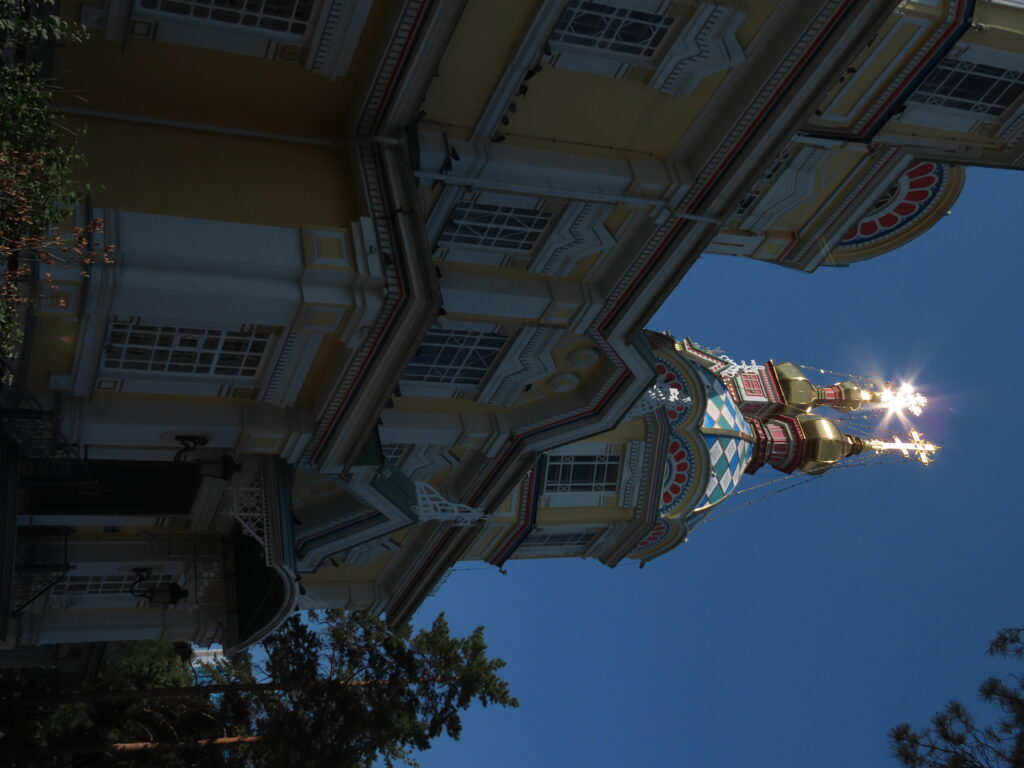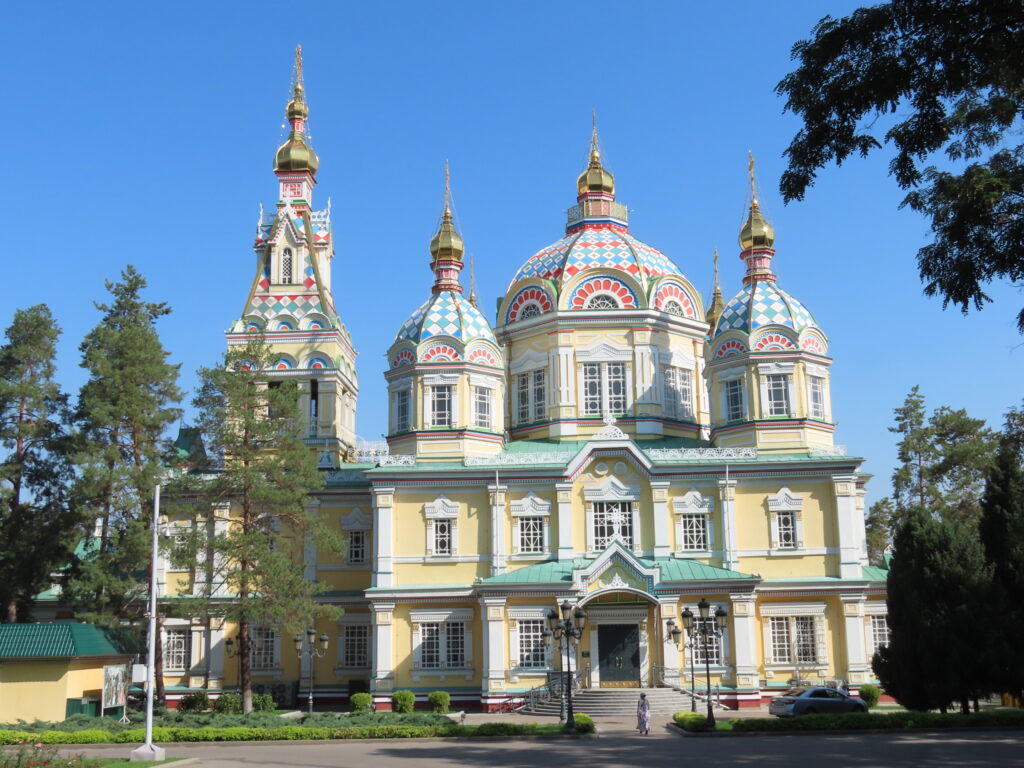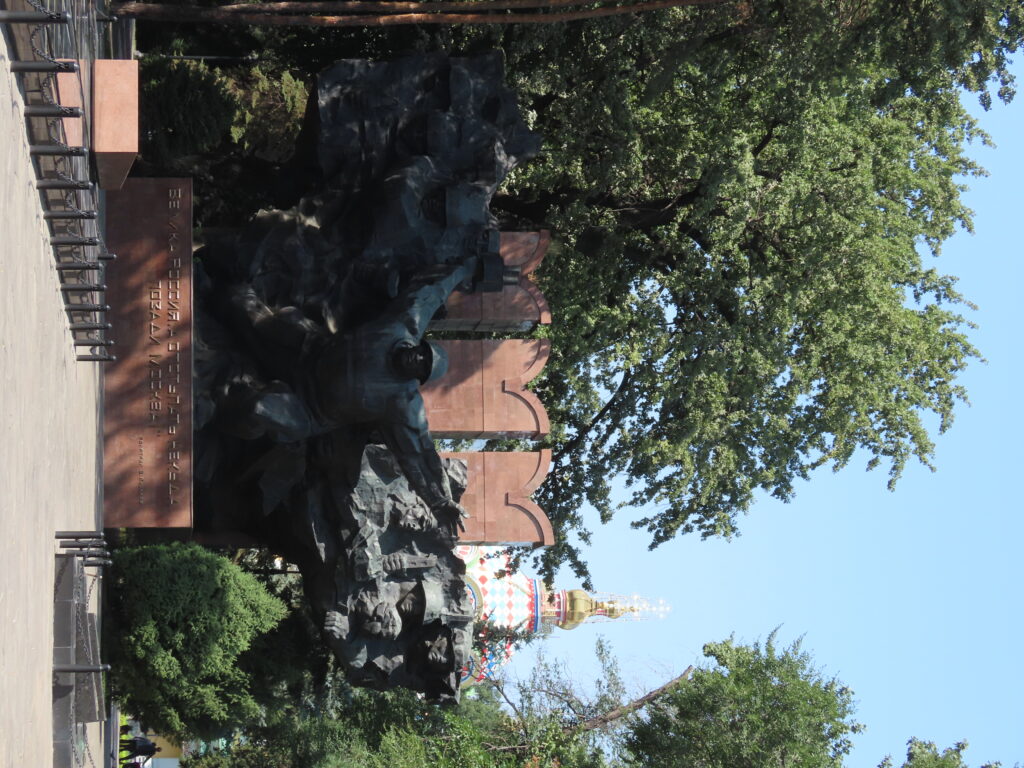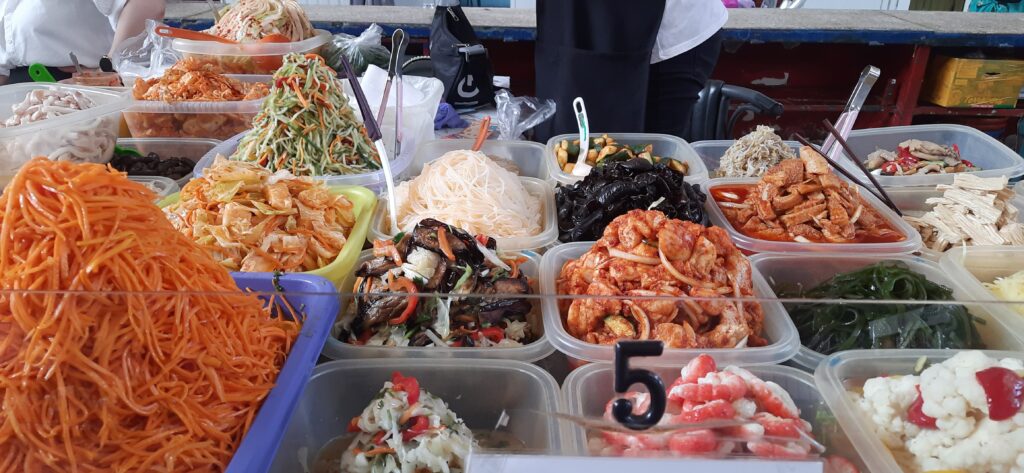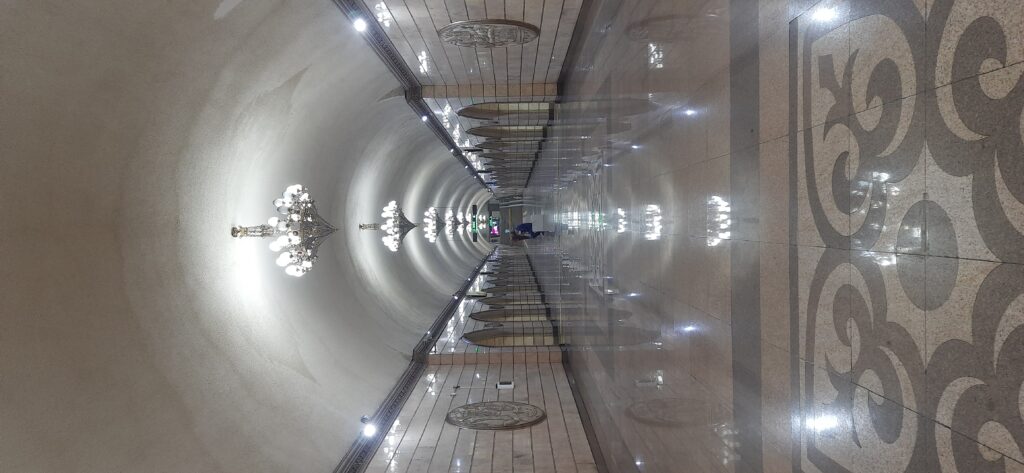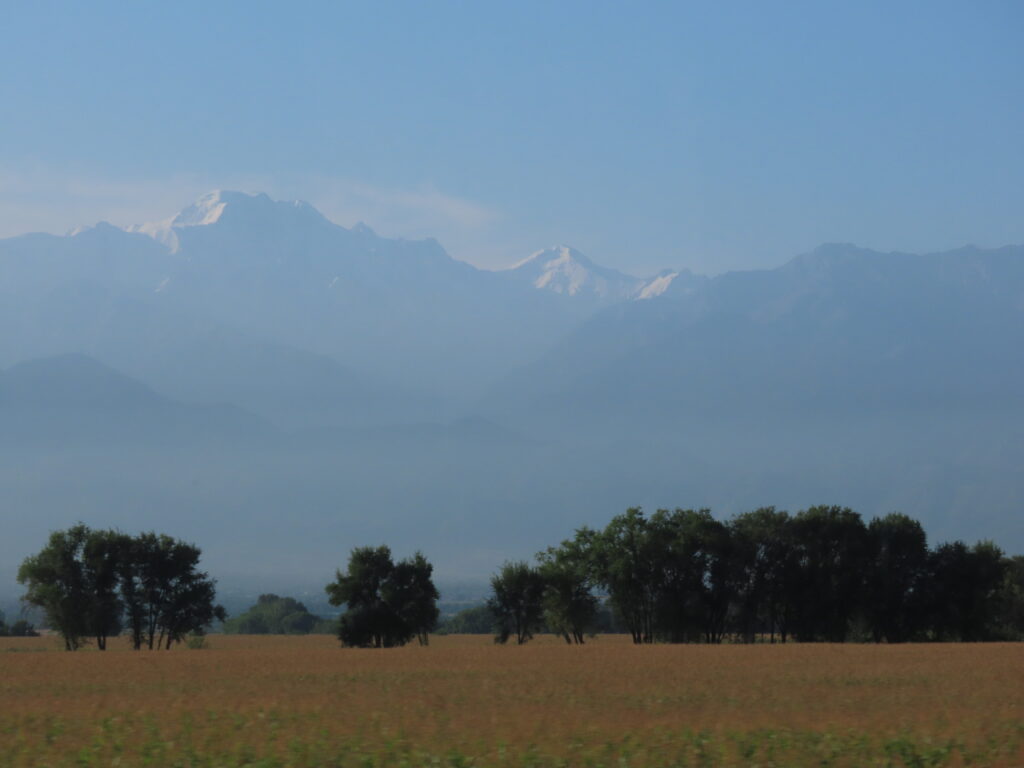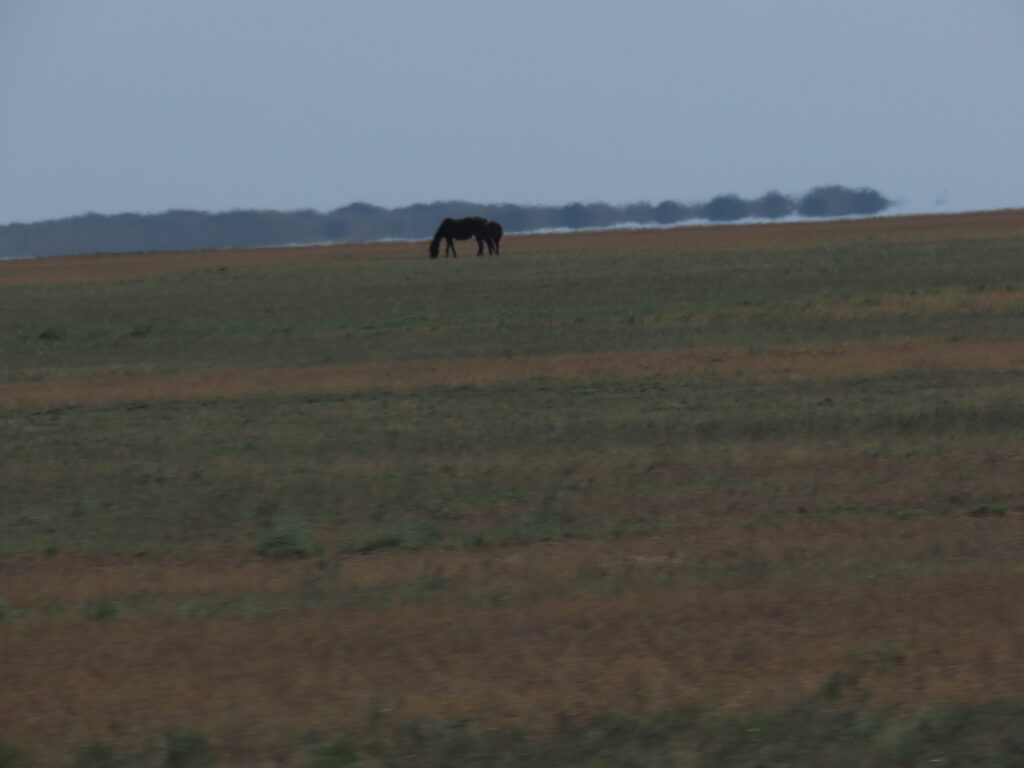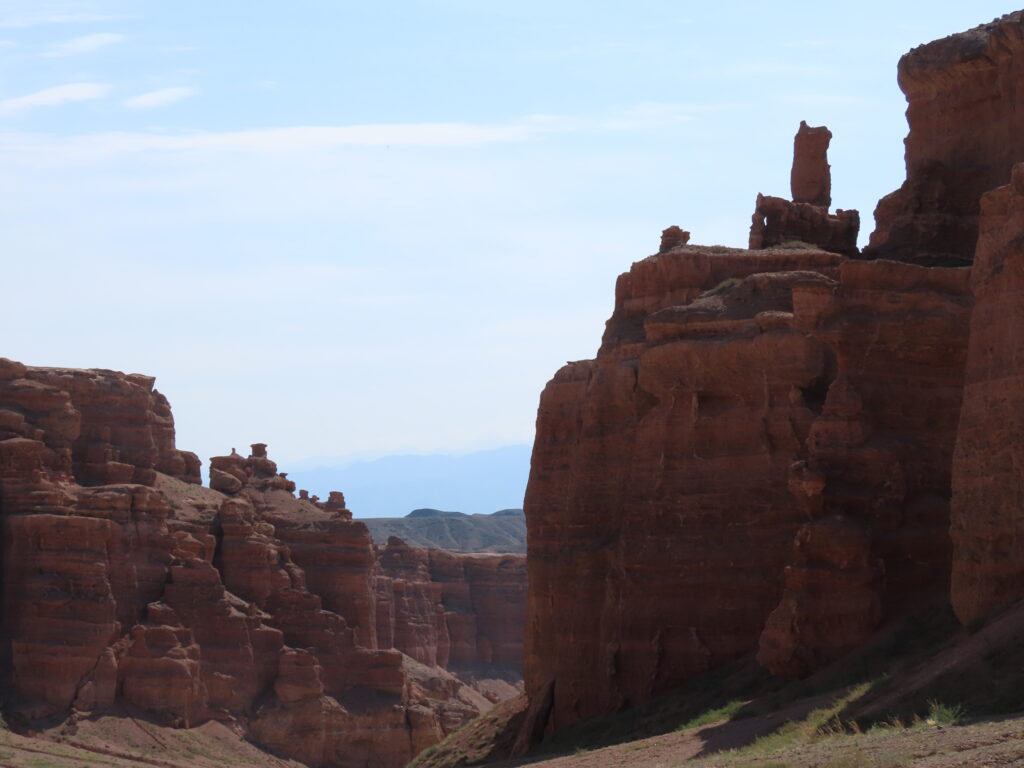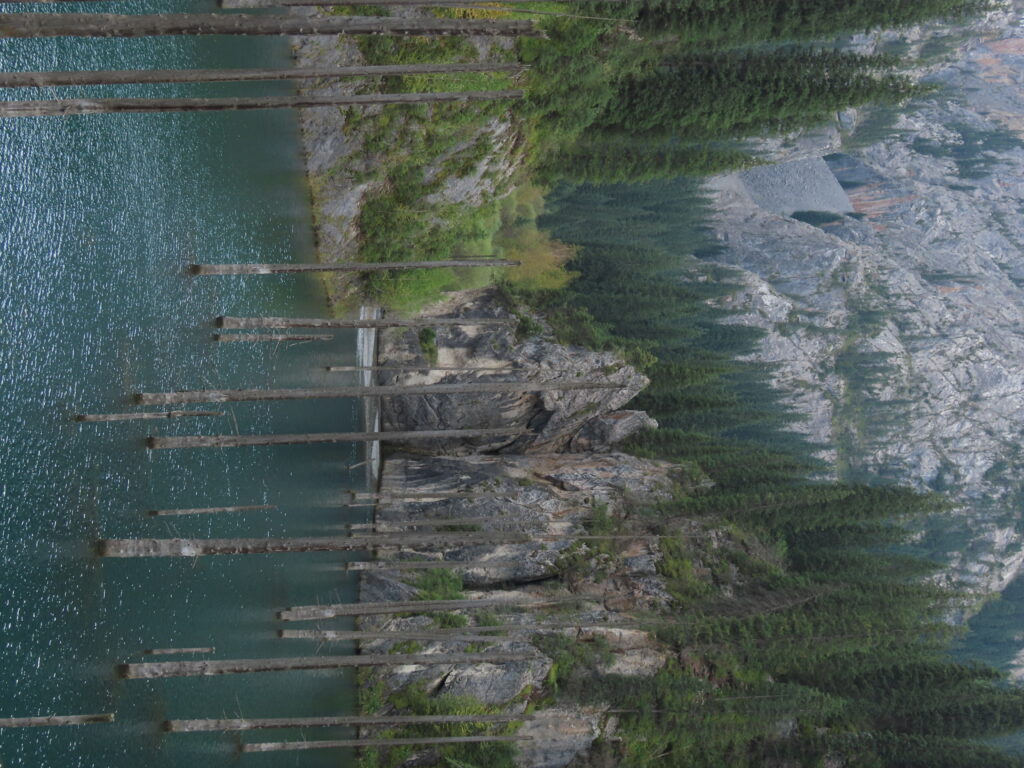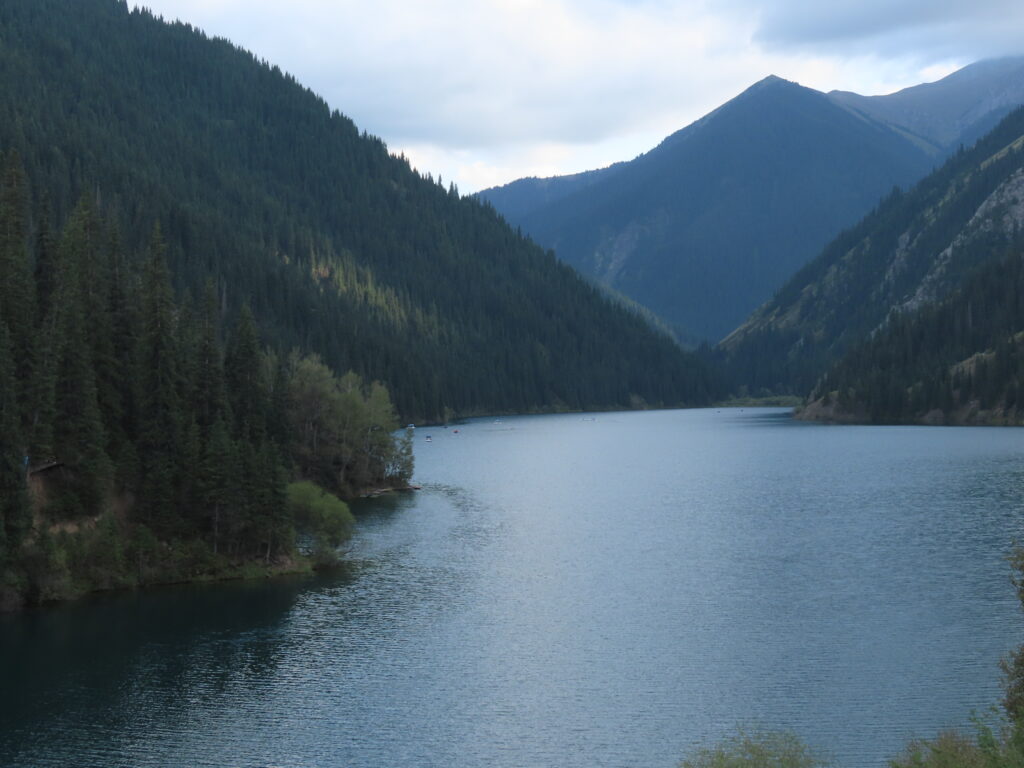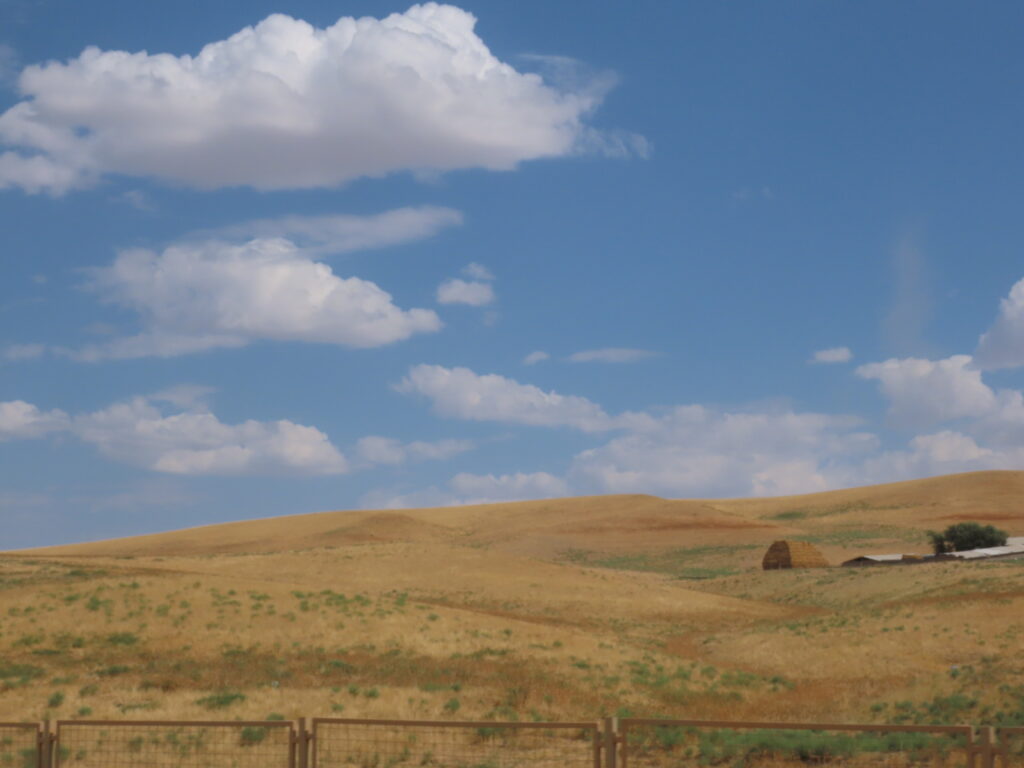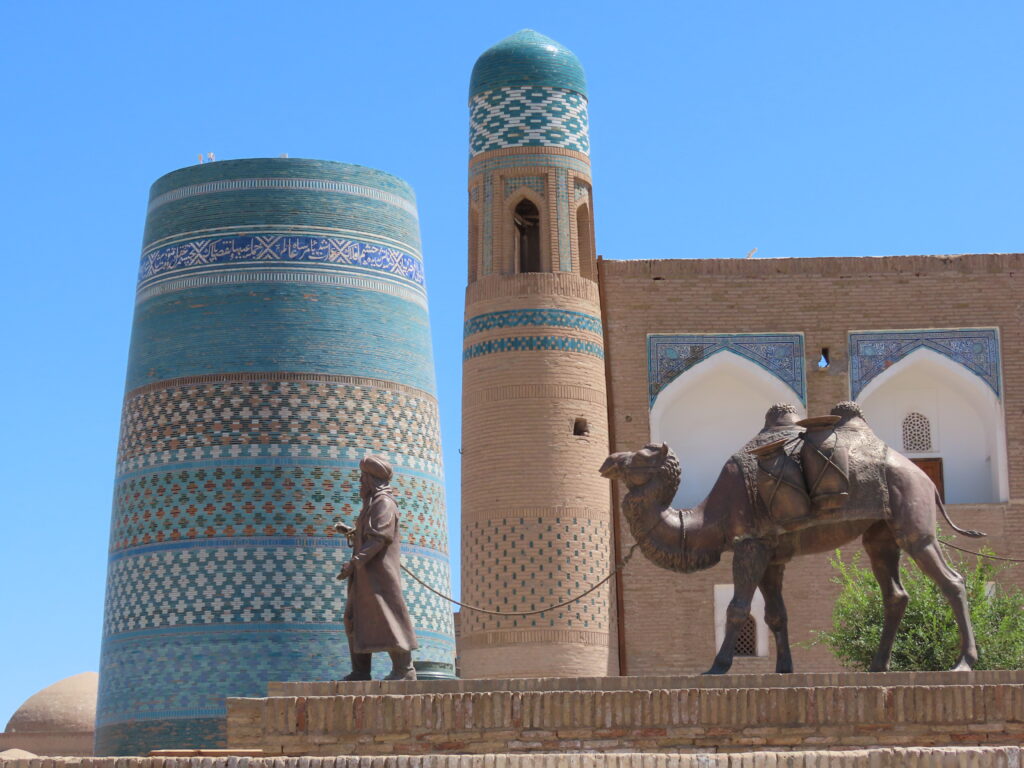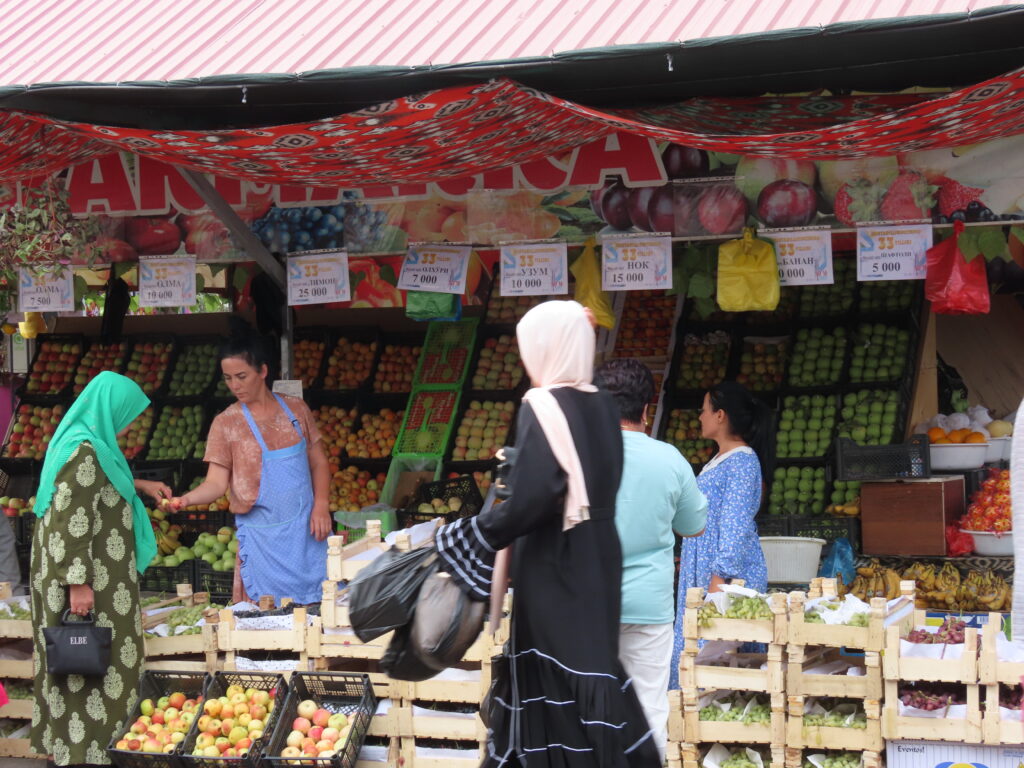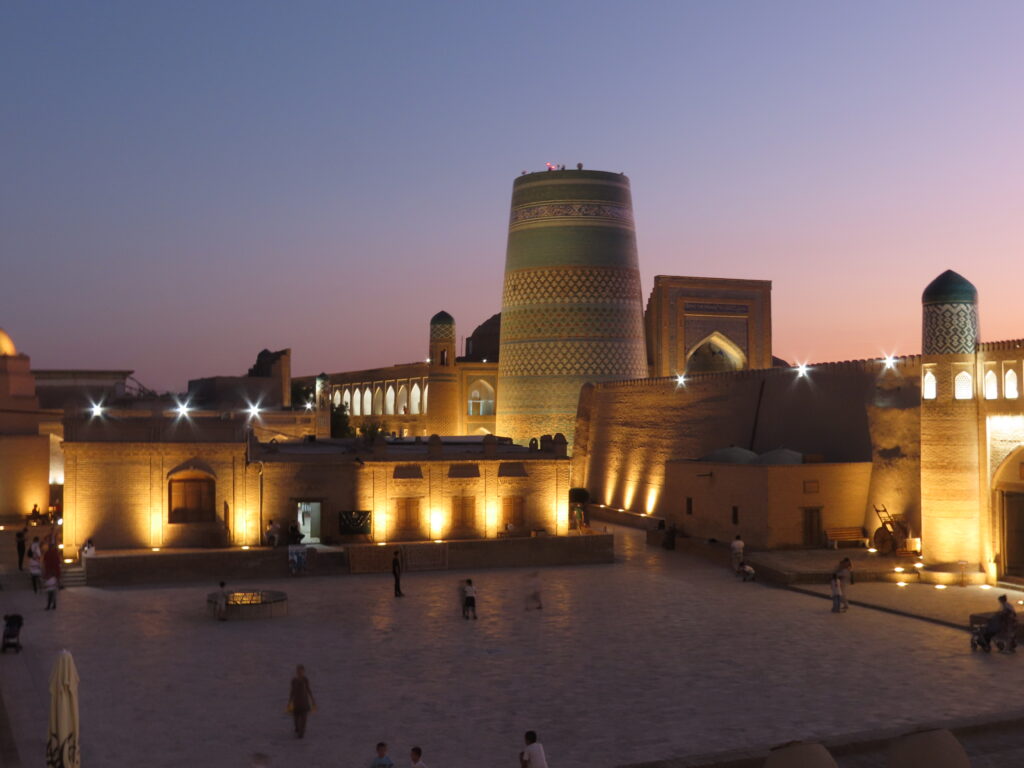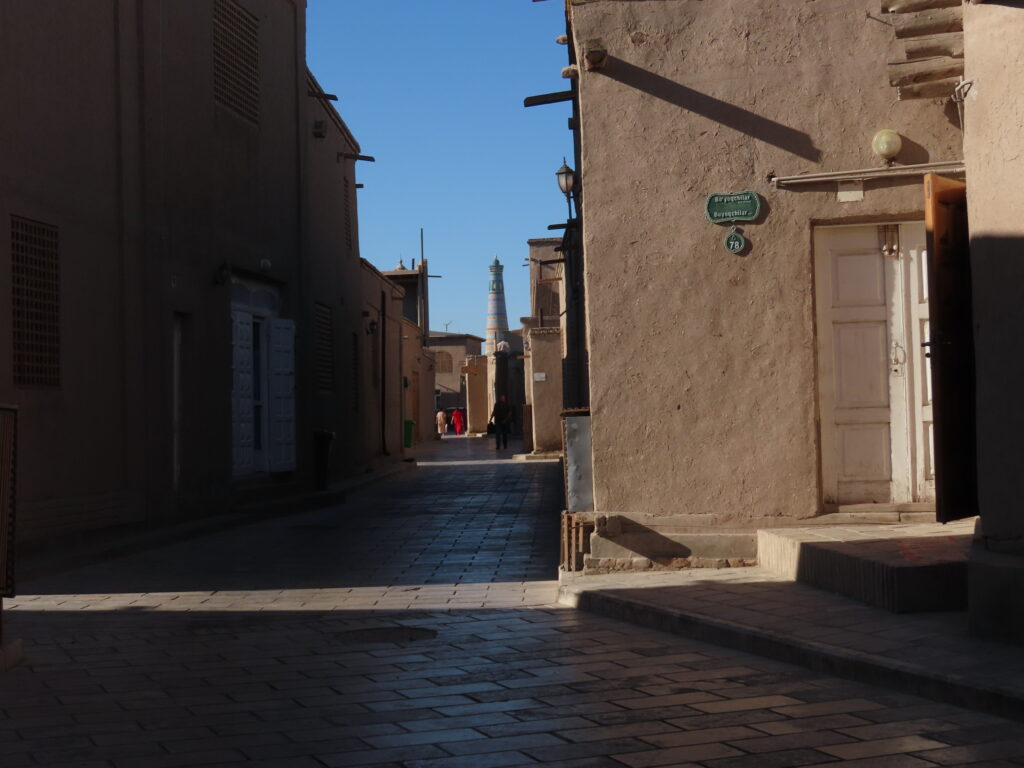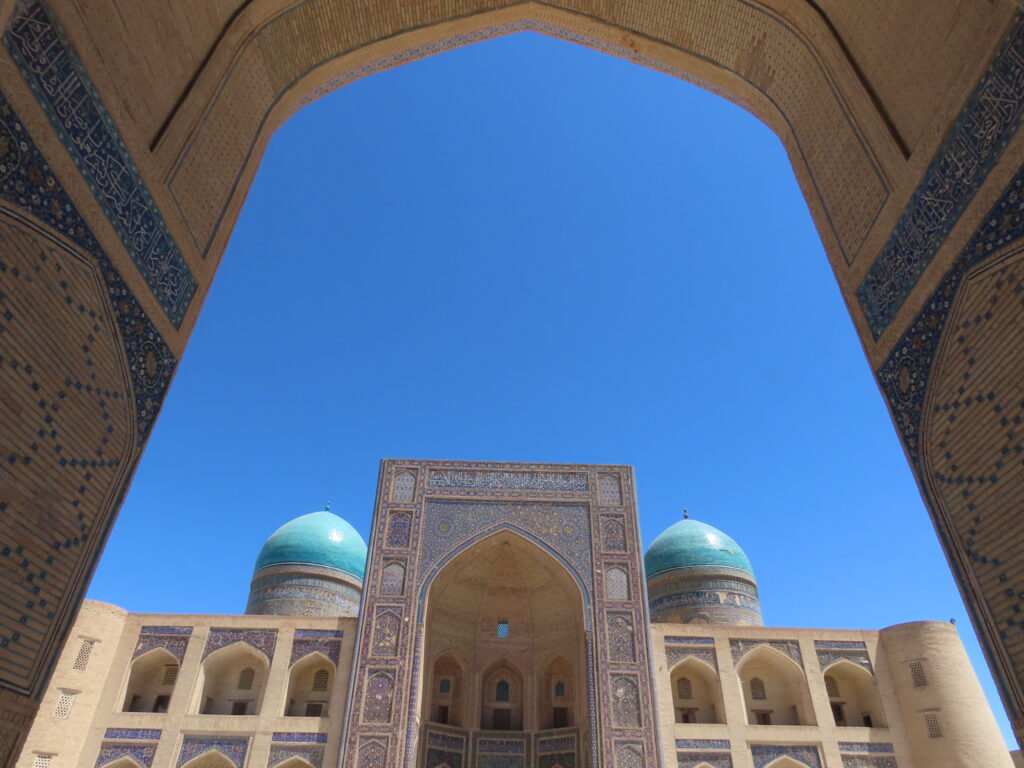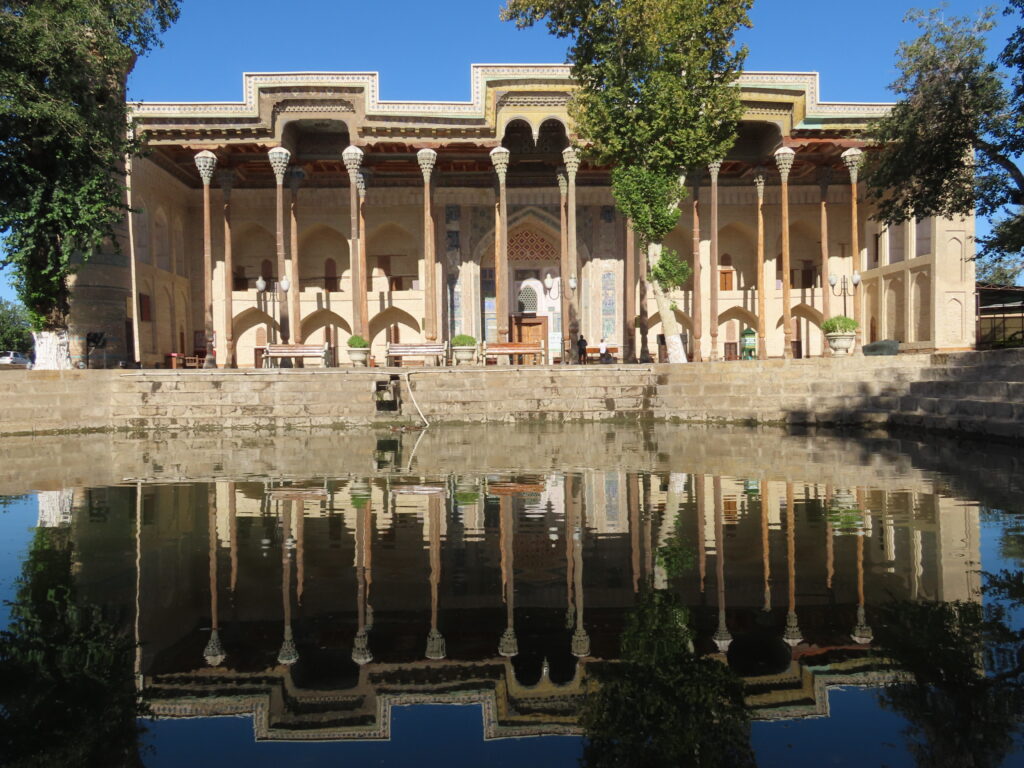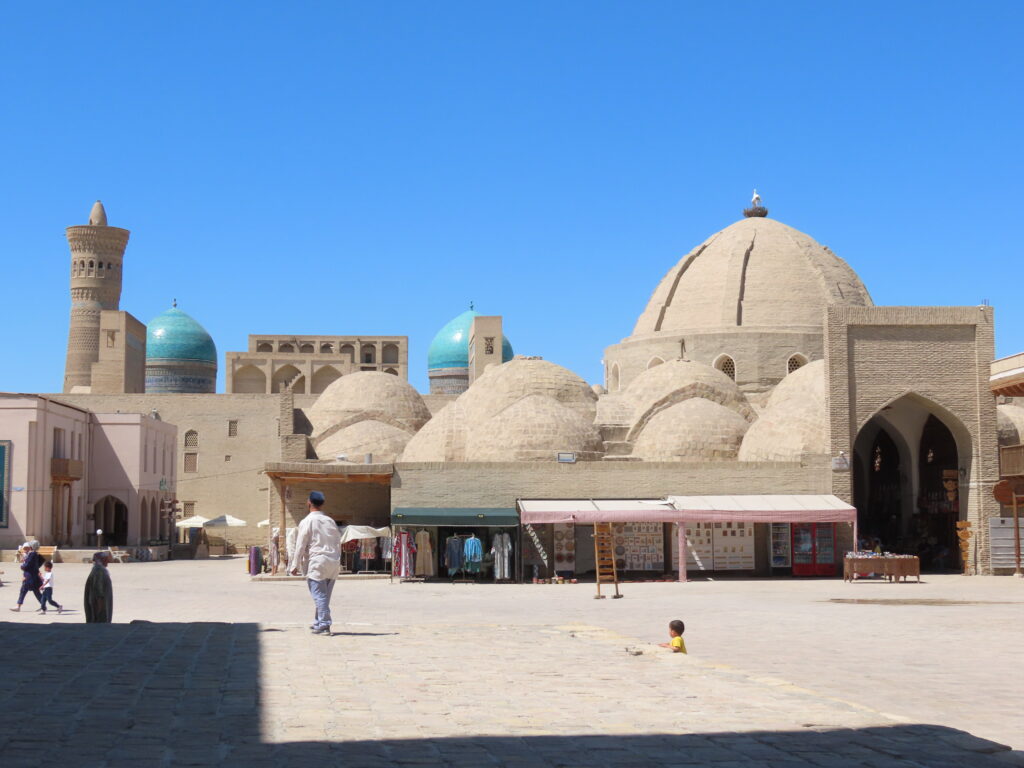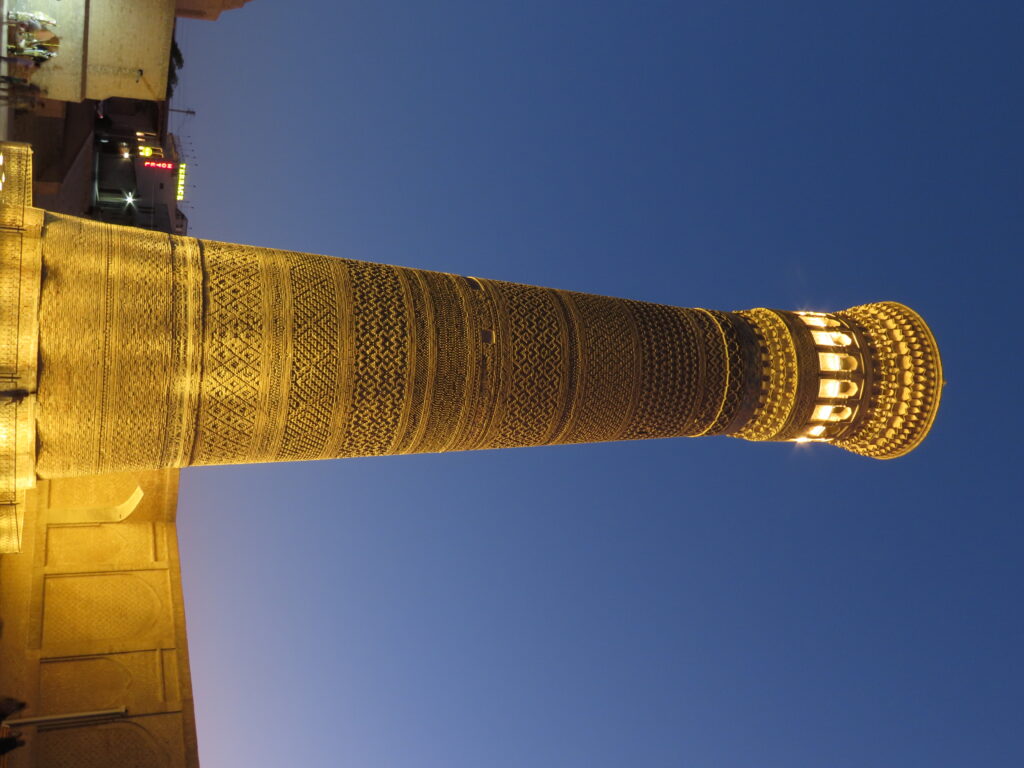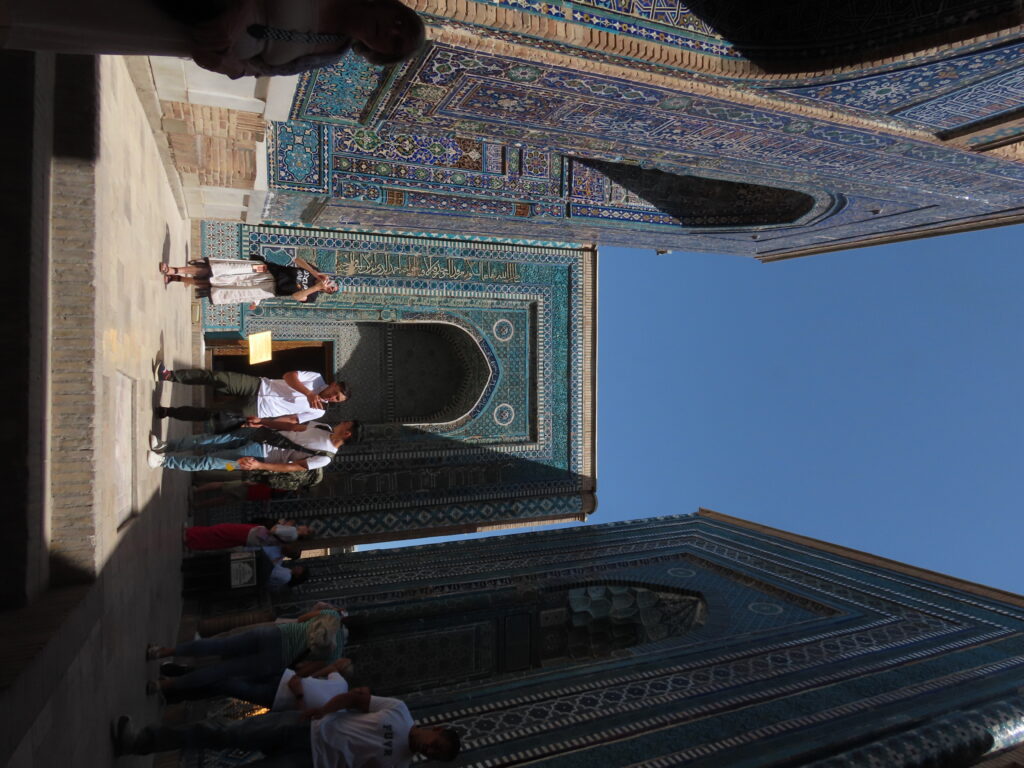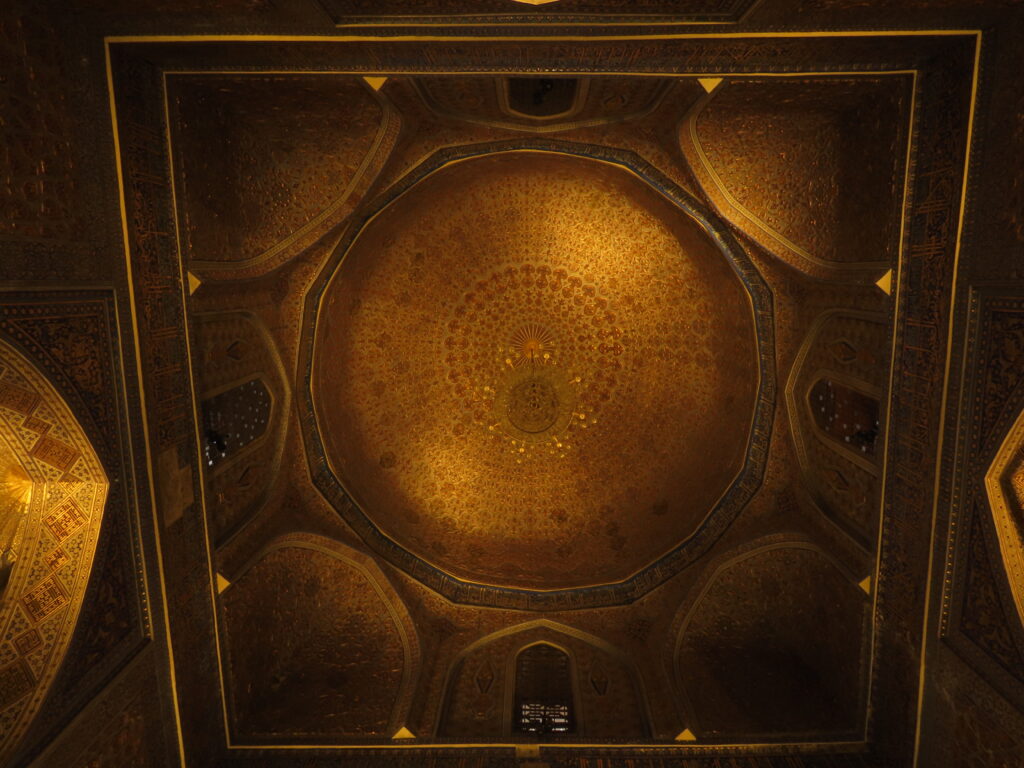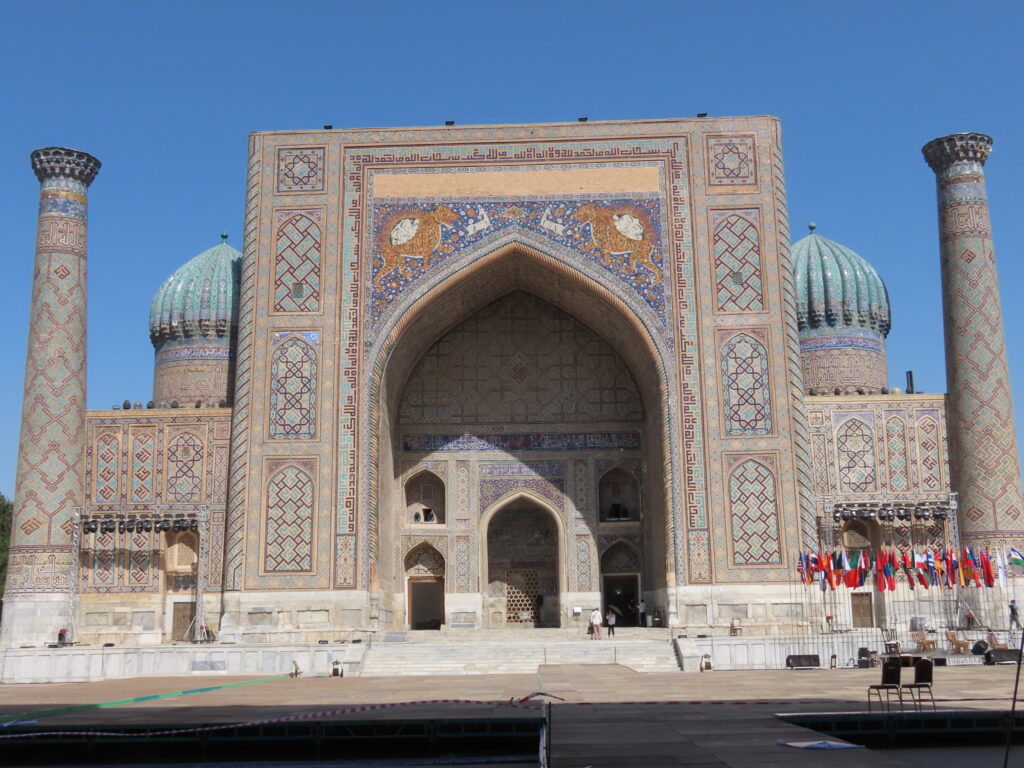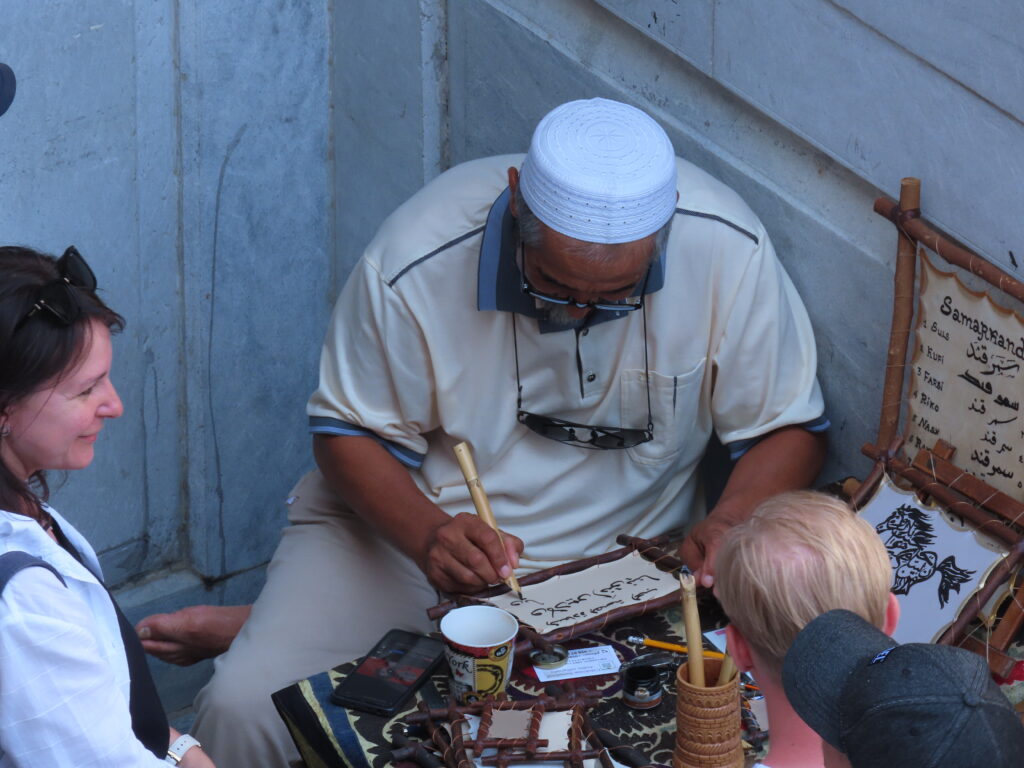Two unconnected sources planted the seed of the Silk Route in my mind. (Which then took forever to germinate!) One was a picture of perfectly moulded mountains providing a backdrop to a lake and the yellowest mustard fields I had ever seen (which was all probably Kazakhstan!). The second was a story on Facebook (if you please) by an intrepid traveller and writer par excellence- James Joyce, who painted such a vivid and exotic picture of blue monuments in Samarkand that it became my ‘have to see places’. Bukhara materialised by and by and along my favourite dal named after it but with probably no culinary connection, has my heart.
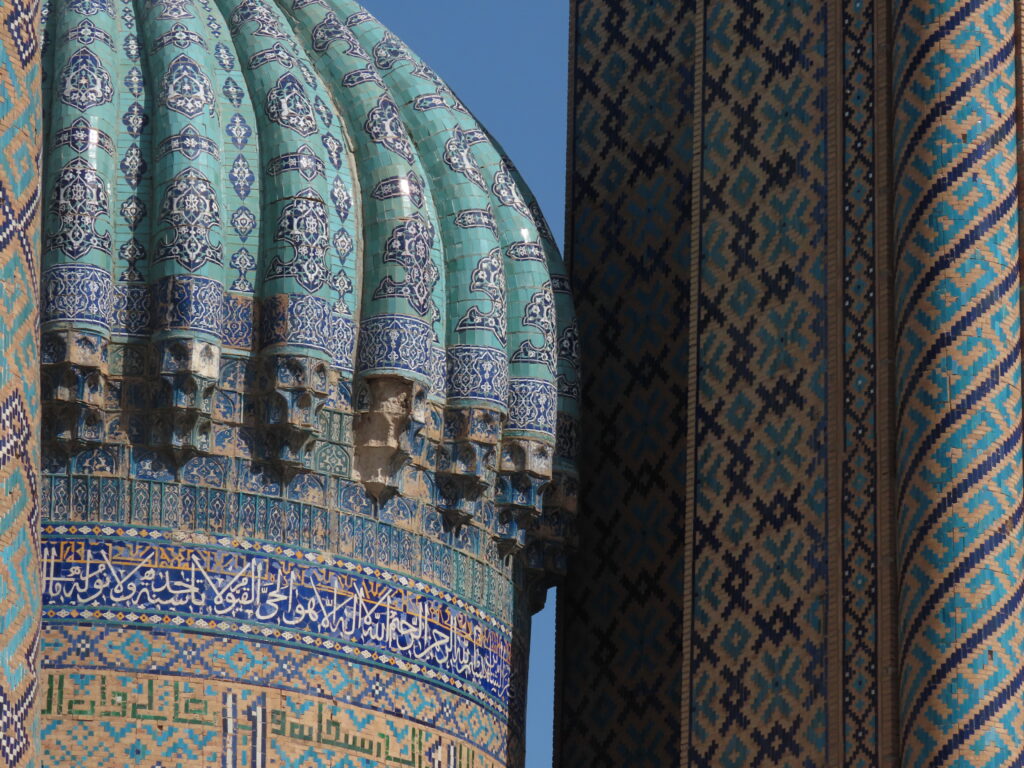
Bukhara- Of Bazaars and Beacons of Light
Done exploring Itchan Kala in the oasis that is Khiva we catch the train to Bukhara. After dozing in the afternoon heat thanks to the bogey’s defunct airconditioning I stand in the passageway as we chug past fields and canals and in the fading light of the evening, I spy a minaret and blue domes on the horizon. From the station we speed past non-descript blocks and the newer parts of Bukhara straight to our accommodation in old Bukhara. The hotel is off the road, behind a park and canal with the Nadir Divan Begi Madrassa enroute with the most brilliant phoenix like birds on it’s façade.
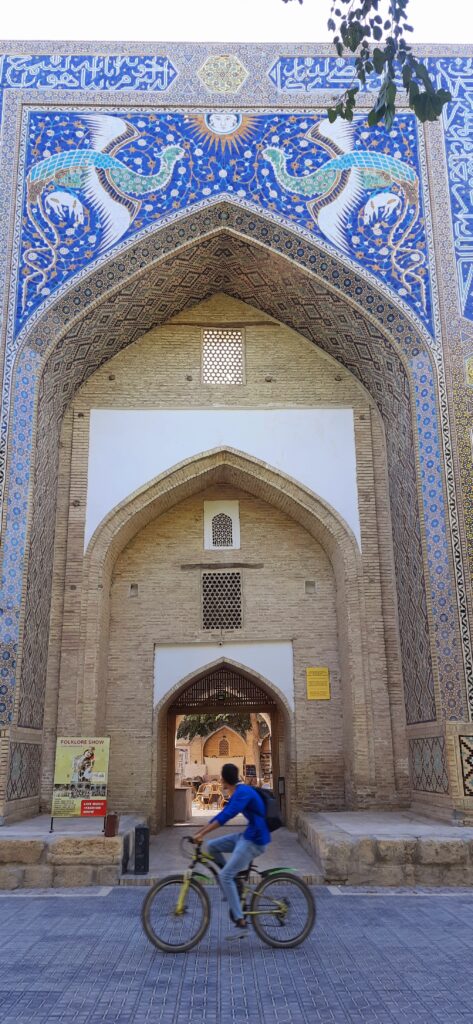
They are striking not only because of the vivid colouring but also since it is such a departure from the permitted geometric designs. (Islam does not permit depiction of living beings which is ironic since in India Mughal miniature art was all about people.)
This ancient trading town with many lives and masters is still alive and thriving with well-preserved traditional domed bazaars in plain brickwork. It was once one of the biggest markets for slave trading though when Ibn Battuta passed through, he found it a little more than a wreck. We walk the same alleys late in the evening, past the domed Toki Zargaron and Telpakfurushon with shops selling carpets, knives and spices and through lively paved streets to the Poyi Kalon complex.
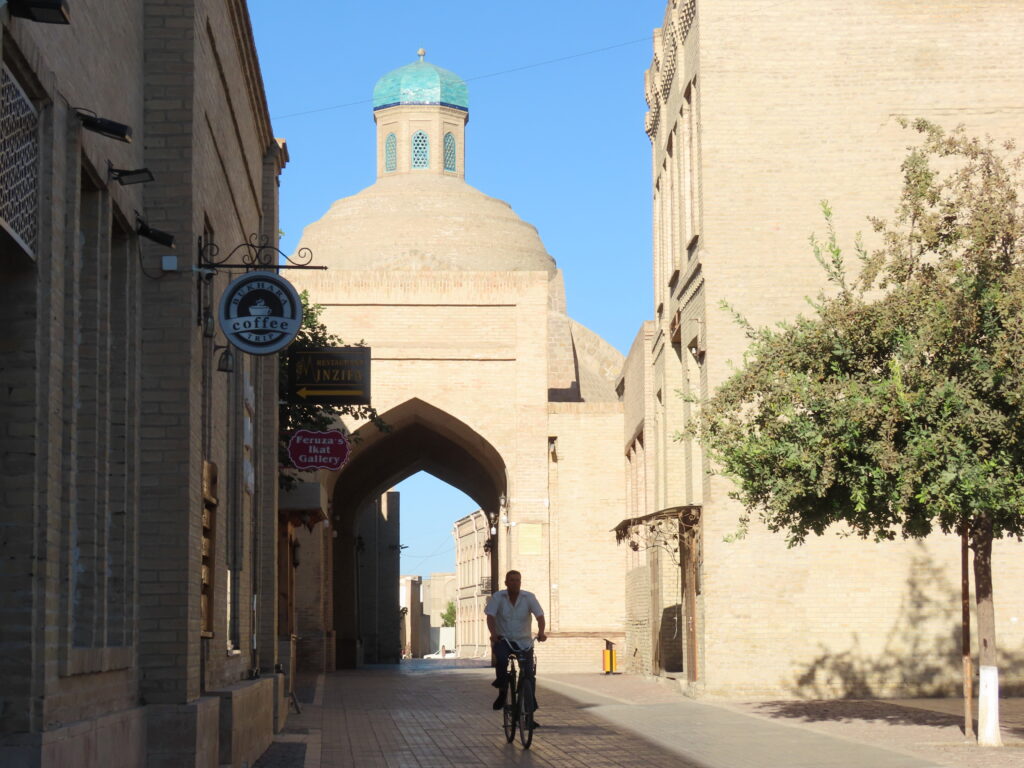
The Kalon tower, the tallest minaret in central Asia when it was constructed in the 11th century, is a beacon of light and in the quadrangle, is flanked by a namesake mosque and the only functional madrassa here- the Mir-i-Arab Madrassa, with giant blue domes on either sides of a towering façade in fabulous blue patterns.
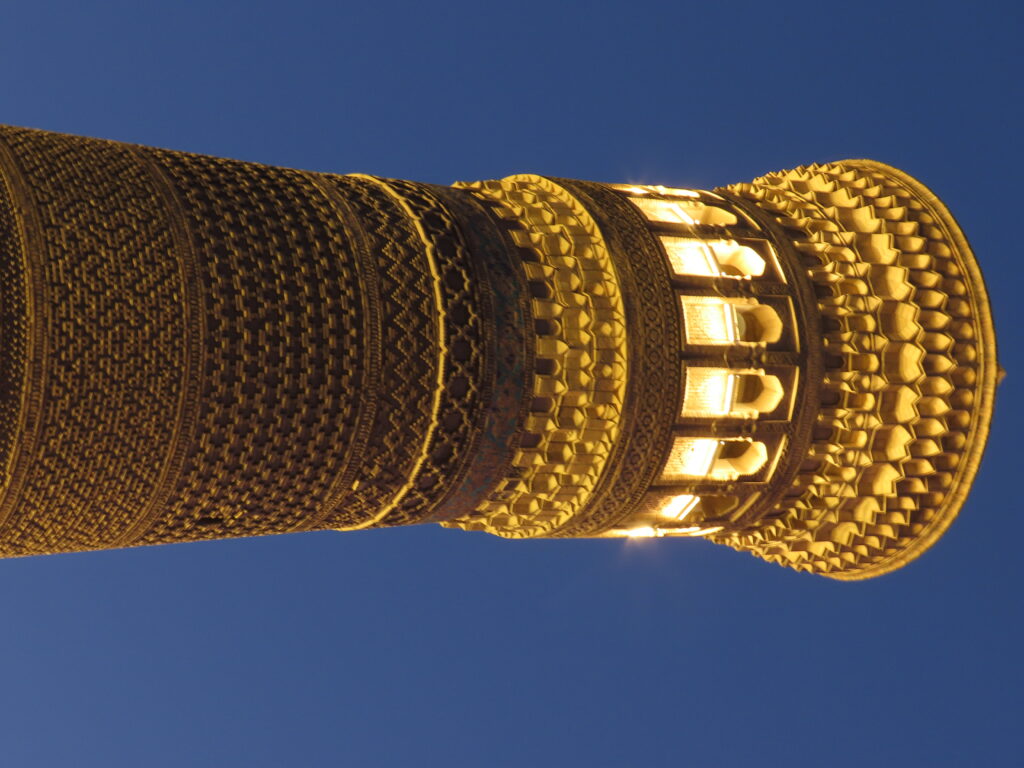
The ensemble is all lit up in blue and pink and as garish as it sounds, it carries it off with panache. There is nothing better than to sit on the steps under lofty arches and soak in the atmosphere.
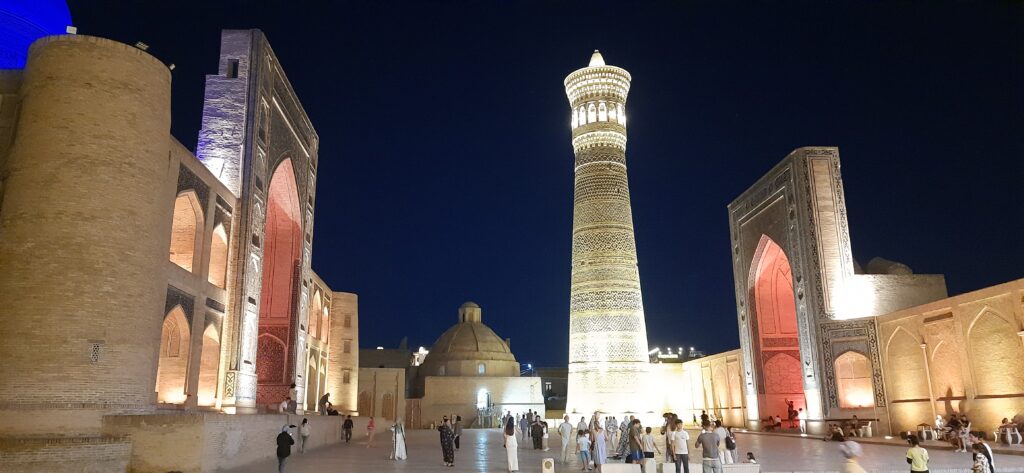
The next morning before breakfast we retrace our steps to the Poyi complex and beyond to the Ark or the citadel which is the oldest part of Bukhara. The ramparts rise high on the flat land curving a little like at Itchan Kala. We cross the road and sit on a bench at the hauz or pond in front of the Bolo Hauz mosque.
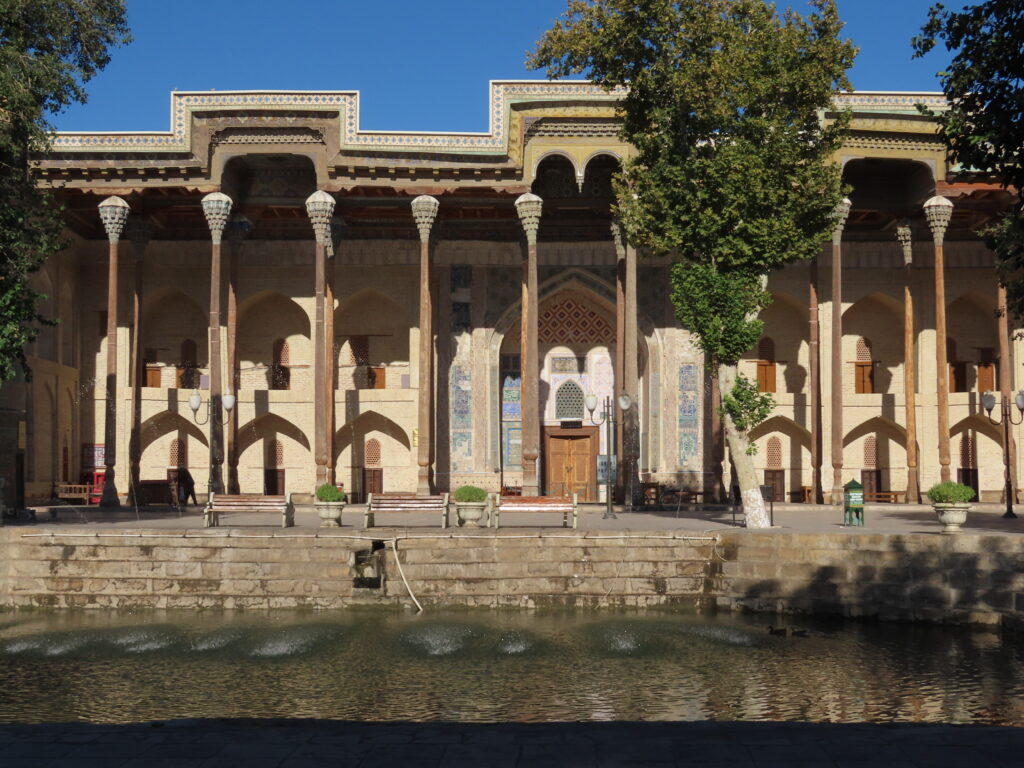
It is unlike any we have seen here. Slender wooden pillars uphold a wooden roof painted in warm colours and the light from the hauz paints patterns on it. Grandparents babysitting little ones feed the ducks.
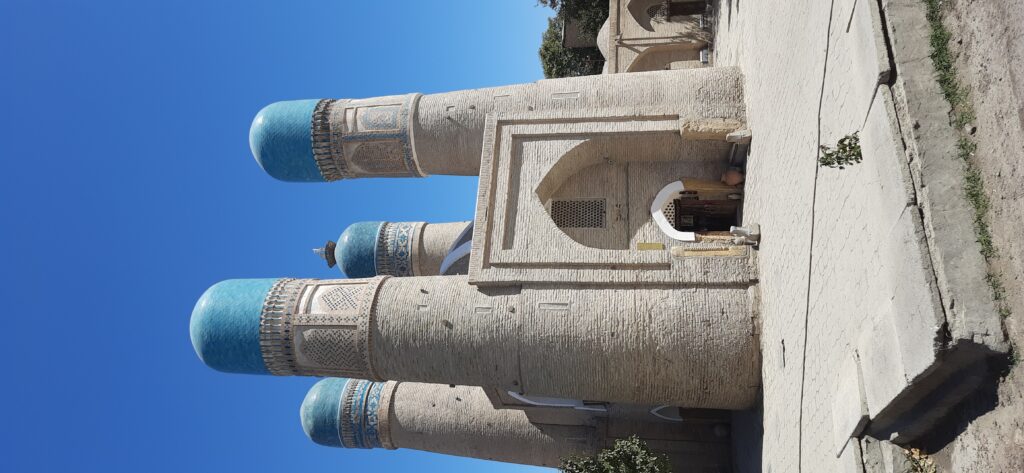
Later we amble to the tiny Char Minor tucked into the bylanes of a residential area. With plain blue minarets it has no architectural beauty yet the miniature structure retains a certain charm thanks to its size. We wander through the labyrinthine lanes of residences with ancient ladas, relics of another time, parked in front, to the two madrassas, Ulug’bek and Abdulaziz Khan, facing each other. The madrassas have been repurposed as shopping arcades with curios, art and clothes. In the heat of the day the tourists take refuge in the shops.
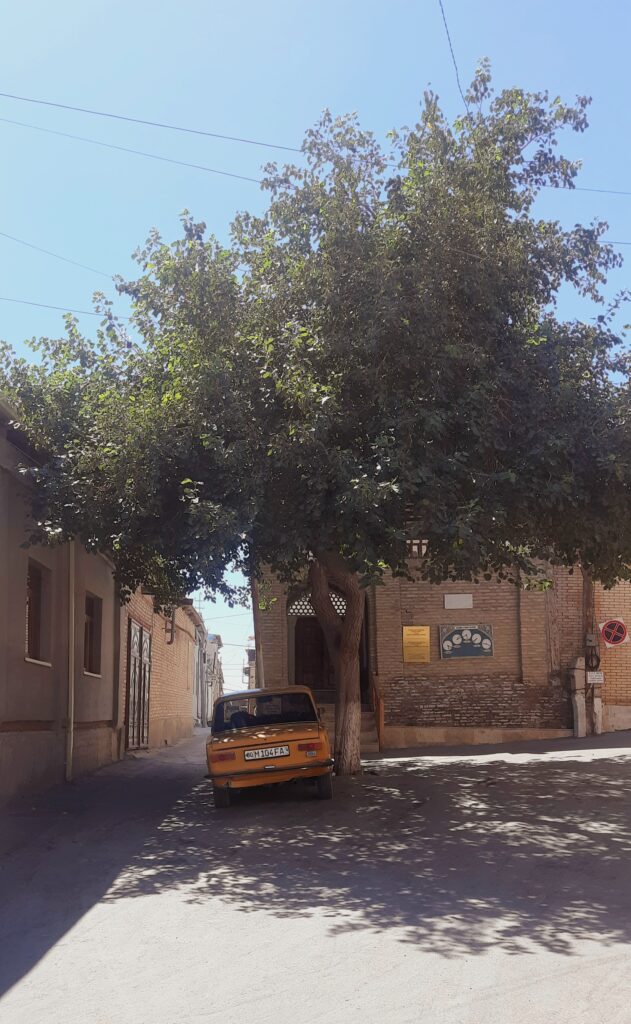
We discover a hamam and I try to persuade the man to try it. He balks seeing the images displayed. Says it looks too contorting to give any joy or relief. Across is a pichokchi’s(master who creates knives) foundry with a furnace shaped like a fluted jug. He is busy sharpening one out.
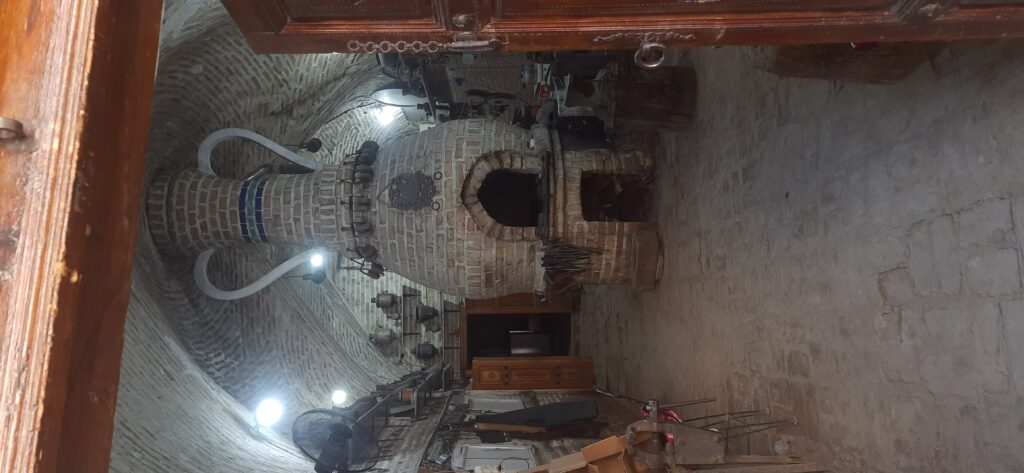
A larger-than-life bronze statue of a legendry folk hero Khoja Nasreddin near Lyabi Hauz is beleaguered by mothers trying to cajole their kids to sit with him on his donkey. It supposedly portends luck, we are told by the man selling curios across the road at Kukaldosh madrassa. We end the evening again at the steps of a fairly deserted Miri Mosque and as the lights come on under an inky sky it is the perfect place to be.
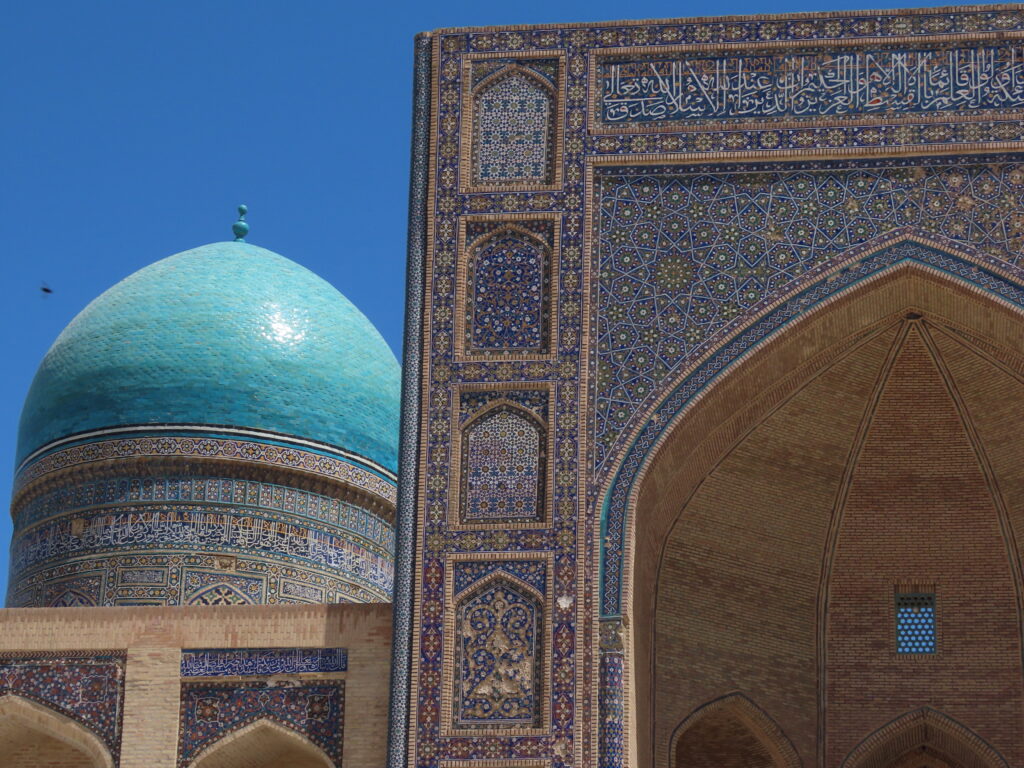
On the Golden Road to Samarkand
The Sharq rushes past the expansive rolling countryside to put us in Samarkand as it is waking up the next day. After a sumptuous breakfast we walk to Registan Square which Google guide says is a two minute walk from our guesthouse. For a change it is accurate as we see the geometric patterned towers of Ulug Beg’s madrassa peep out from above the thick trees.
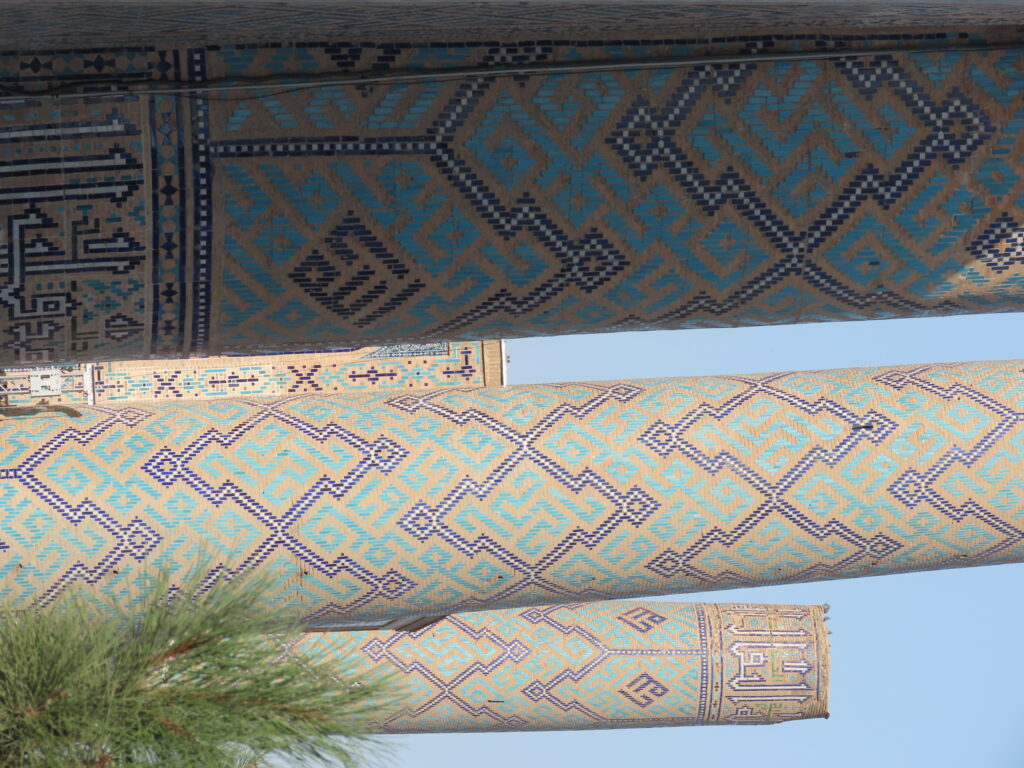
There is music in the air. But the initial excitement of finally seeing the most famous ensemble of the route turns to disappointment when we discover the reason for the festive air. There is going to be a mega music show to coincide with Uzbekistan’s national day at the Registan but unfortunately for security reasons and the practice session the Square is cordoned off. So near yet so far! We watch the dancers twirl around and flag bearers practice from behind the barricades before recalibrating our programme.
We head to Shah-i-Zinda, which by the time we reach is completely overrun by bus loads of tourist. But, once we climb up through a bland archway in a line stand Uzbekistan’s finest buildings. This necropolis is the final resting place of many a royal family member and court dignitary of yore. The tiled facades go from an indigo to midnight blue and every shade in between.
Discover colours in- Pangong Tso -The Gems in the Crown
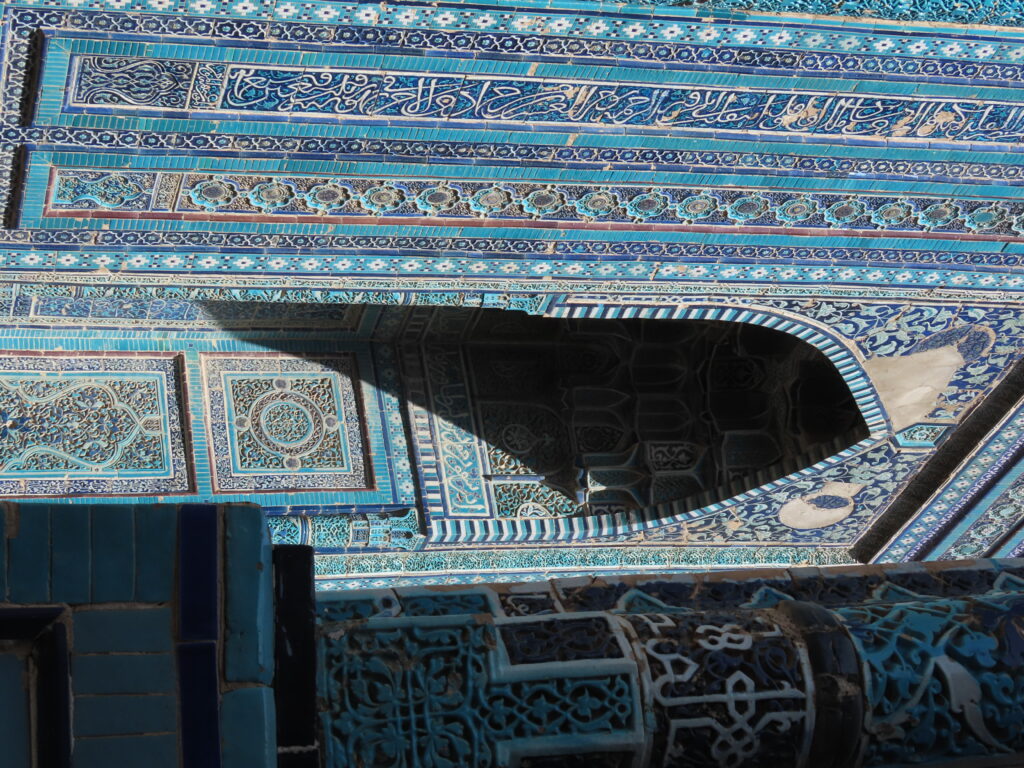
With calligraphy, floral motifs and geometric patterns, still retaining all their glossy finish they are just beautiful! The interiors of most are a rich bottle green and the roofs have patterns in orange. A man sells paintings in one and at the end of a maze of rooms near the end we find an imam singing prayers once the handful of seats are full.
Read also- A Bard Sings a Story in Jhansi
We walk to Bibi Khaynum’s mosque. Timur’s queen’s mosque has been resurrected from a ruin and inside the spacious quadrangle shaded by trees stands a massive marble quran. In the Siyob bazaar adjoining it where apart from the mounds of dry fruits, spices and candied sugar, the riot of colours comes in the shape of porcelain souvenirs.
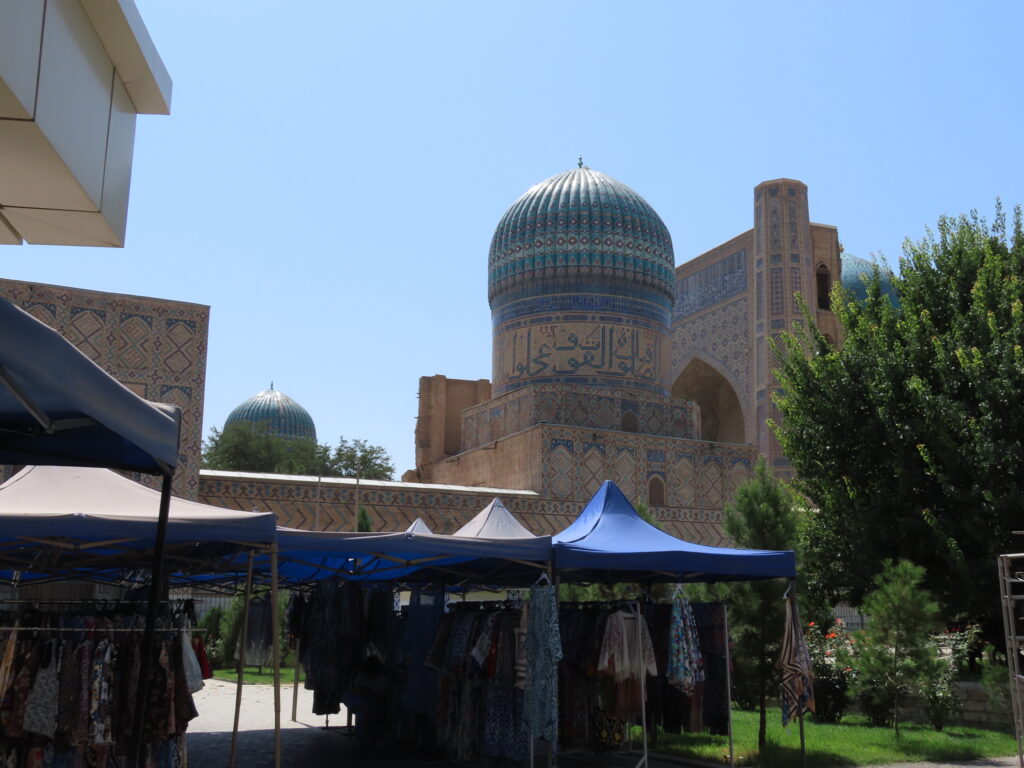
In the evening we walk down to Gur-i-Amir, Timur’s mausoleum. The fluted turquoise dome is massive but that apart it is a modest structure.
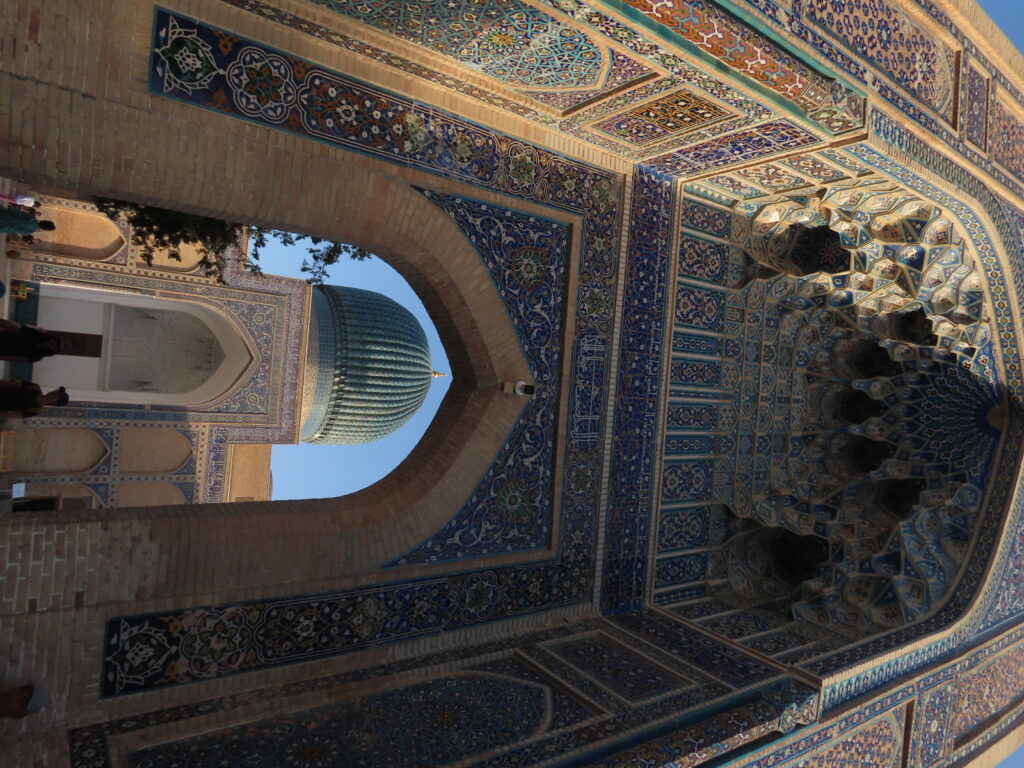
Inside, the famed ruler has the company of his sons, Ulug Beg, his grandson and one of his revered teachers. The plundering Nadir Shah made off with Timur’s jade marker but returned it after a spate of bad luck followed along with it. The restored interiors are a rich blue and the gilded gold cupola with lighting on point makes it glow.
We get lucky the next day in the afternoon since the barricades are opened for visitors at the Registan Square in between the practices. All the minarets seem to be leaning just a little at different angles.
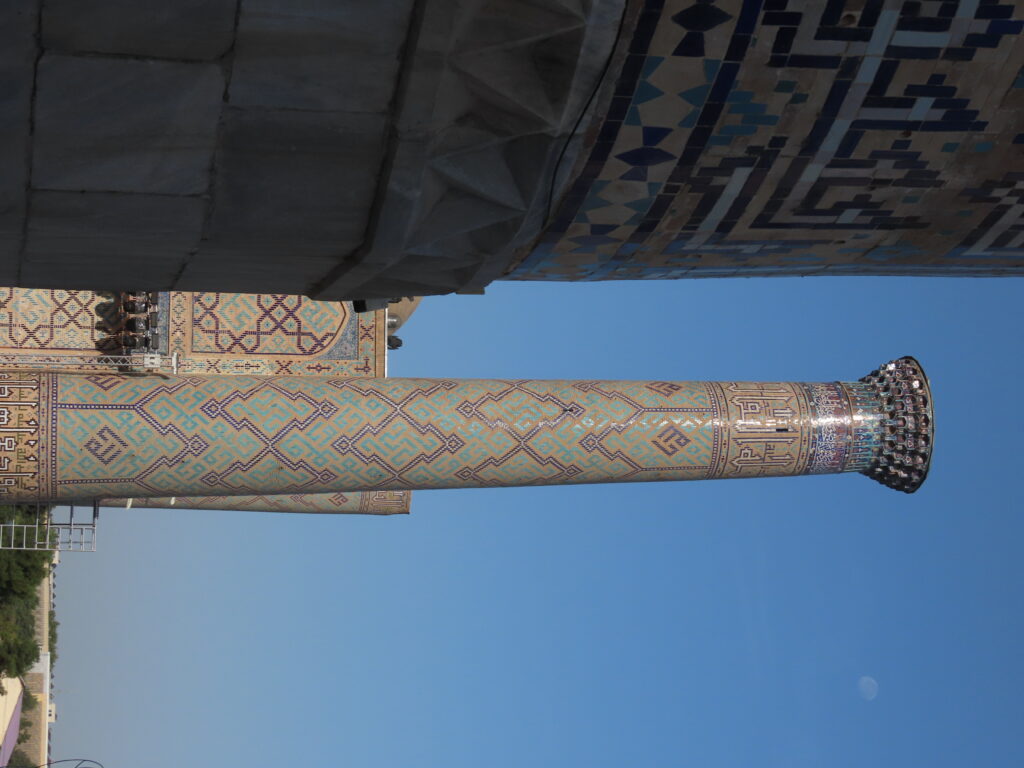
The Tilya Kori Madrassa in the centre has a photoshoot going on in the inner quadrangle with a bride making a pretty picture in white but once inside our jaws drop taking in the rich interiors which seem to be as opulent as Timur’s mausoleum!
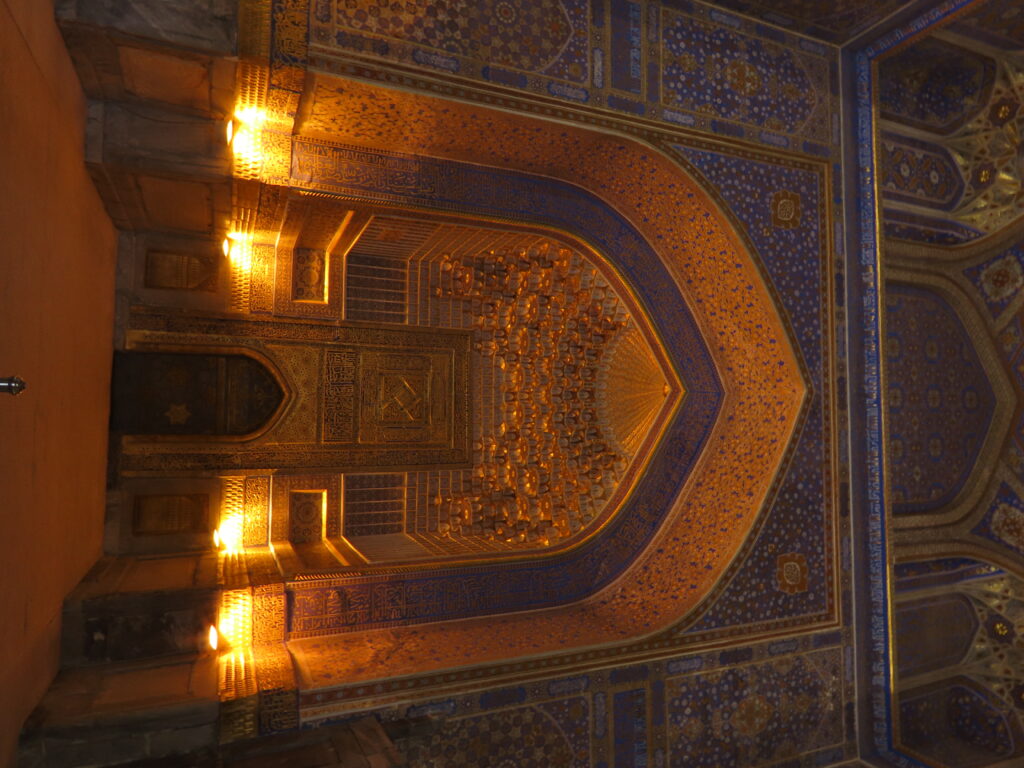
The Sherdor Madrassa is true to its name with unmistakable bright orange shers or tigers on the dwar (door) high up on the arched façade.
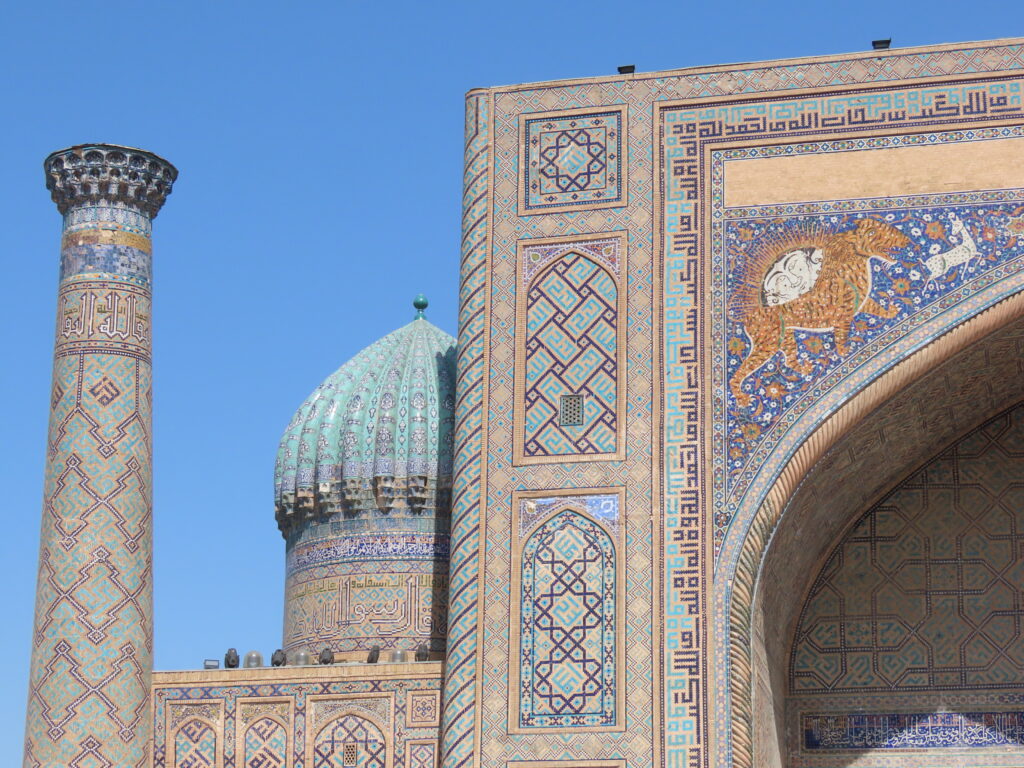
Inside the small quadrangle of Ulug Beg Madrassa with its carpet sellers in an alcove and other trinket shops we find a blink and miss coffee shop on the first floor. A perfect perch to view the calligrapher at work below while sipping an iced coffee.
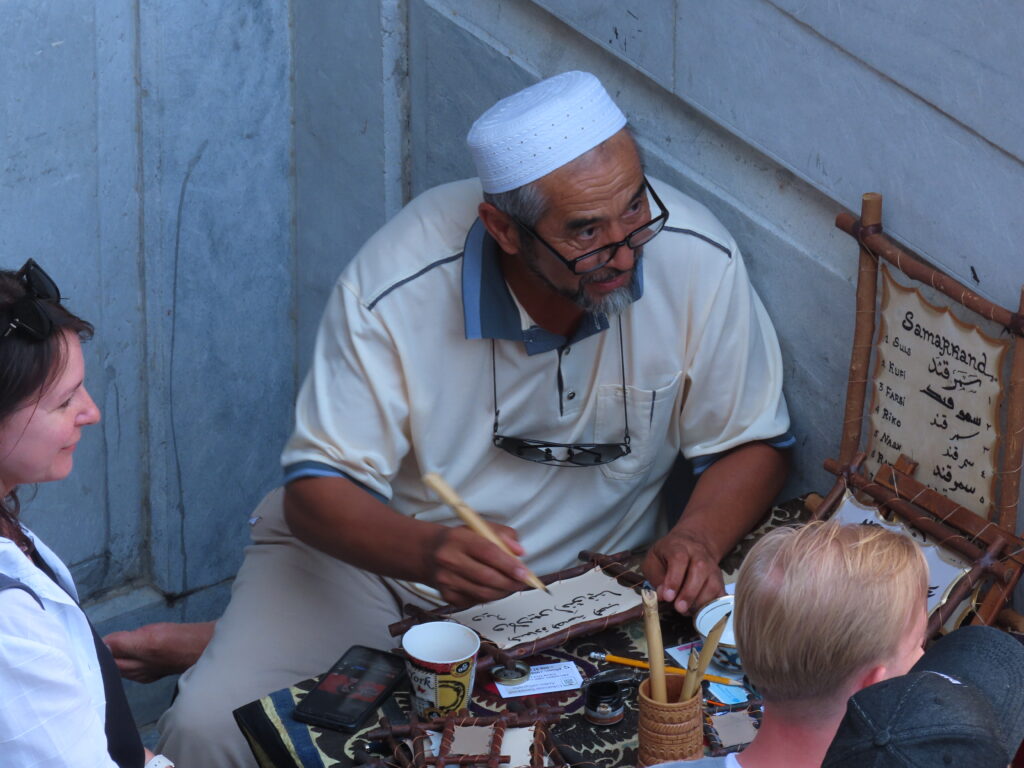
The madrassa named after the famous astronomer king has a sundial below. The wheels of time never still and this ancient city, now a bustling metropolis, carries the old along with the new, in perfect step and harmony, much like the performers at Registan.
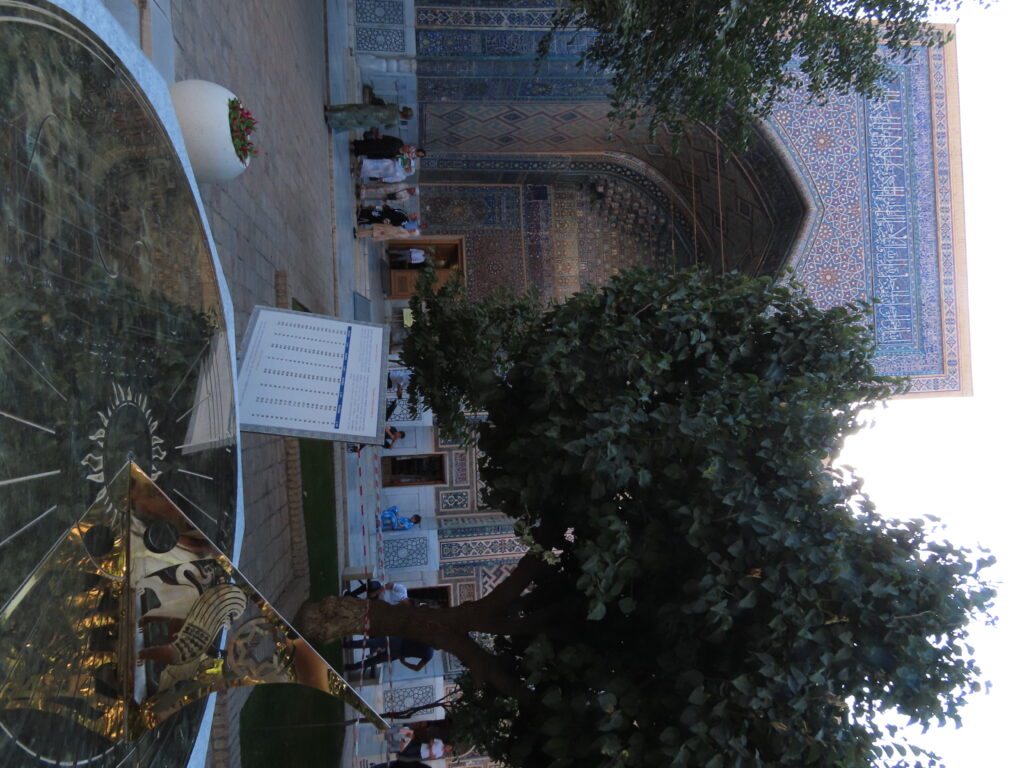
Fact File-
Getting there–
There are Sharq(regular) and Afrosiyob (bullet train) trains connecting the two cities to Tashkent.
Use the Yandex app for taxis. Very reasonable and convenient.
Sightseeing–
Bukhara- The Kalon Mosque has an entry ticket.
Samarkand- All the monuments require tickets. The Registan Square ticket is valid for the entire day.
For more details read- Ultimate Uzbekistan in 8 Days
